 United Kingdom (1917-1918)
United Kingdom (1917-1918)
Medium Tank – 200 Built
From idea to production
The Whippet tank is what its name implies; a Whippet, a breed of fast hunting dogs used for chasing prey down and catching it. ‘Fast’ here being comparative. Compared to the much larger and heavier British tanks of WW1, the famous ‘rhomboid’ shaped machines, these really were Whippets.
Designed to effectively emulate the role of scout and cavalry, push ahead, harass the enemy and to use machine guns to sow confusion, the Whippet was intended to work with those heavier tanks and not to replace them.
The Order
The tests at Oldbury of the new Whippet design had met with approval. Some 200 Whippets were soon placed on order with this new polygonal style upper body. The goal was to have them delivered to France by the end of July 1917 and a further order of 200 was placed that summer which was canceled about 4 months later. Of these first 200 machines, only 166 had been completed by the summer of 1918 and it was into the autumn before the remaining 34 arrived. All 200 vehicles were assembled at the Wellington Foundry works of William Foster and Co. Ltd. The name ‘Tritton Chaser’ was gone. This was now ‘The Whippet’ or officially the ‘Medium Mark A’. They were to face the trials of combat very soon after they arrived in France.
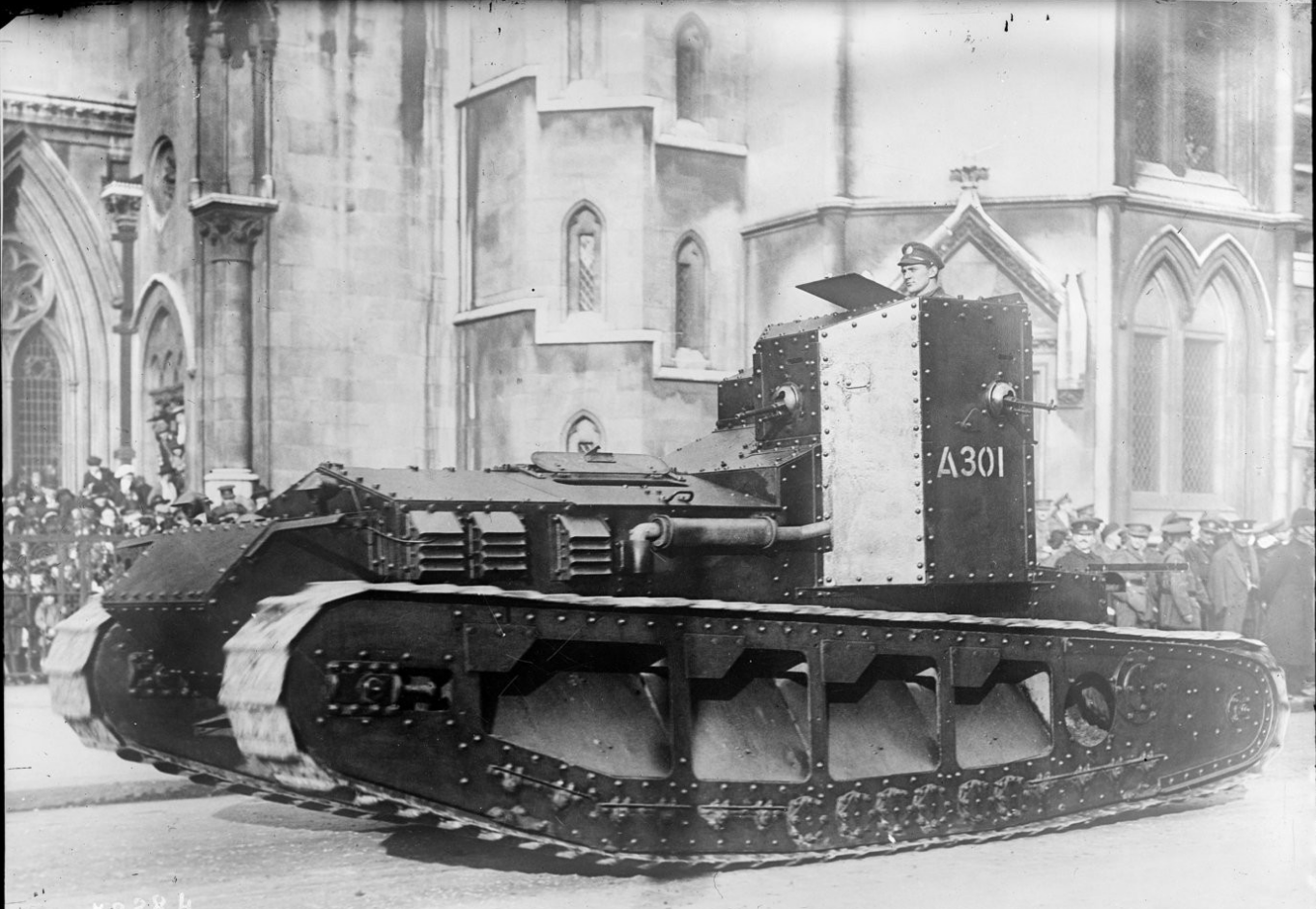
Whippet A301 on show to the crowds at the Lord Mayor’s Parade pictured outside the High courts of Justice, London probably 1919. Photo: BNF
The Tritton Chaser had morphed into a similarly looking but larger ‘Whippet’ tank. This production vehicle was noticeably different to the rebuilt Chaser. The basic shape was the same but that curved exposed front fuel tank now had an angled armored cover. The distinctive open mud chutes on the side were slightly redesigned and there were now four roughly rectangular shaped openings. A fifth small circular one at the rear behind the fourth mudchute was for accessing the drive chain and the covering plate is sometimes missing in photographs. Another change was that those 16 Skefco roller bearings were now reduced to just 6 on each side. They bore of the most of the weight from the tank.
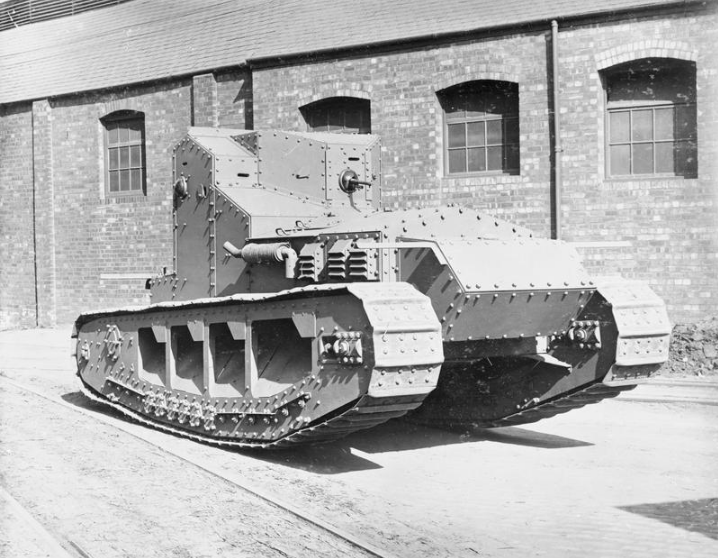
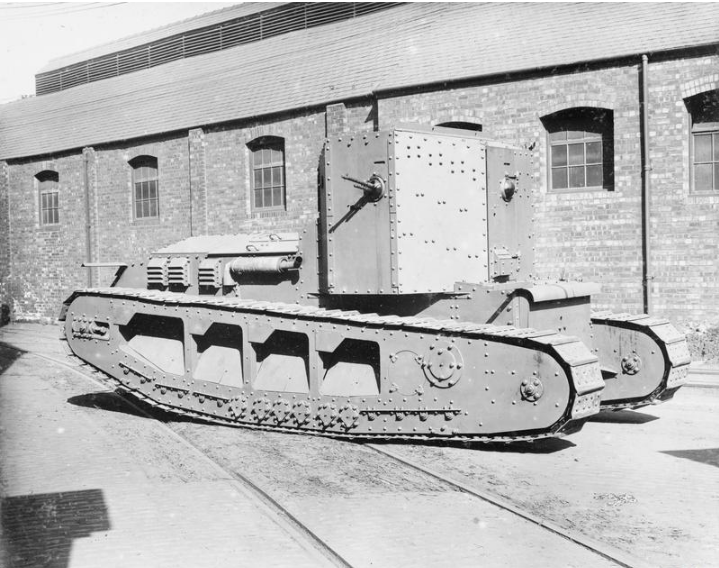
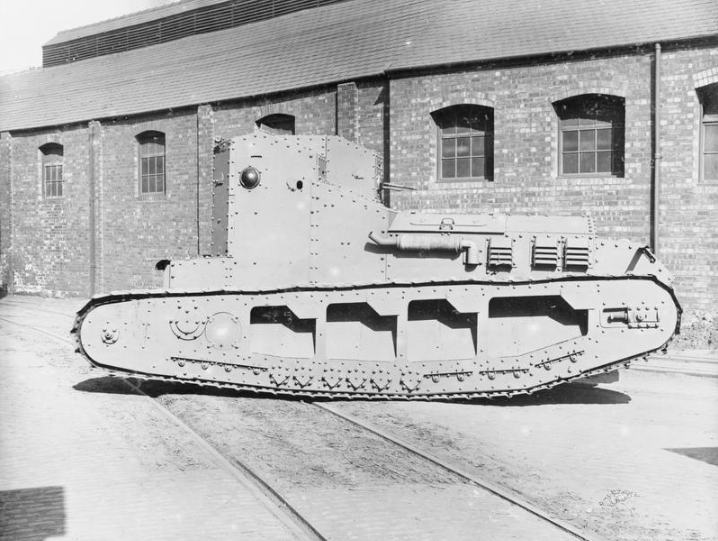
Factory fresh Whippet tank with just 2 of the four machine guns fitted. Photographs nicely show the changes made to the suspension arrangement and mud chuting. The small ‘arm’ seen projecting from the front is a steel arm used for attaching the canvas mud guard. Later Whippets would also have a small section of angle steel attached to the area around the front mudchute. This vehicle is actually the very last prototype prior to authorized production. Photo: IWM
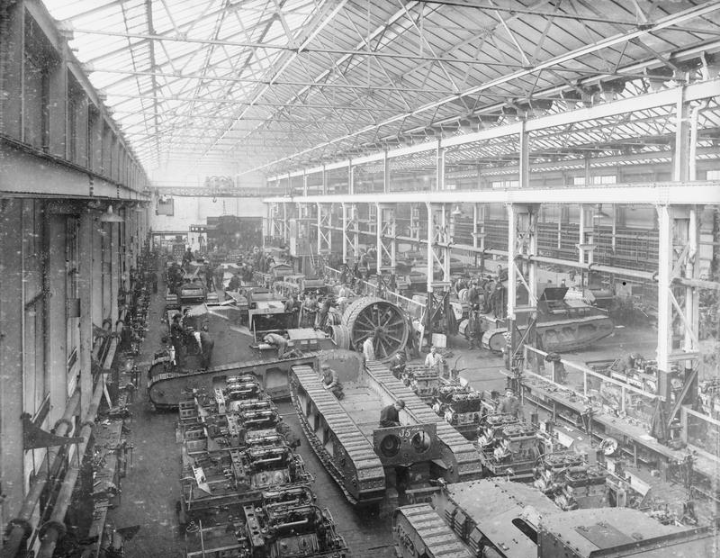
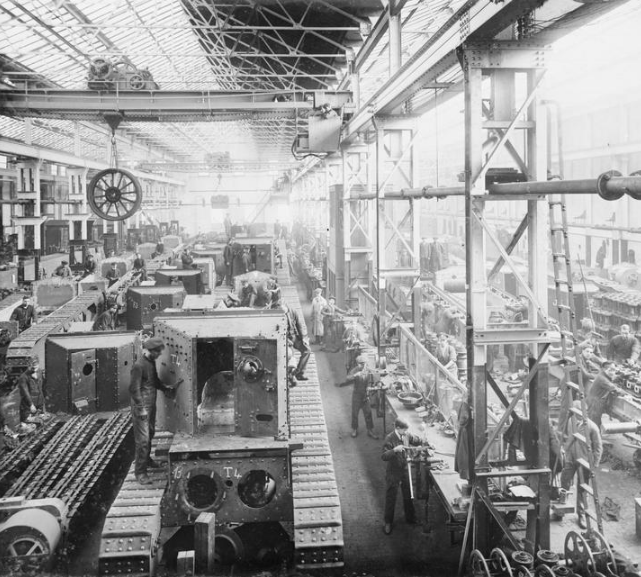
Whippets under construction at the Wellington Foundry works of William Foster and Co. Ltd, Lincoln. Photo: IWM
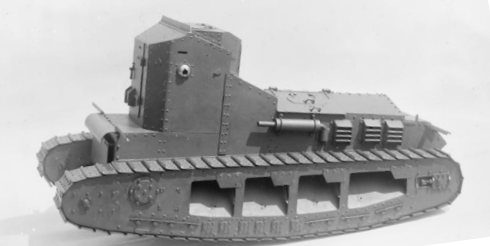
Early design of production model Whippet tank, still with a horizontal exhaust outlet. This is curved upwards on production vehicles. Photo: IWM
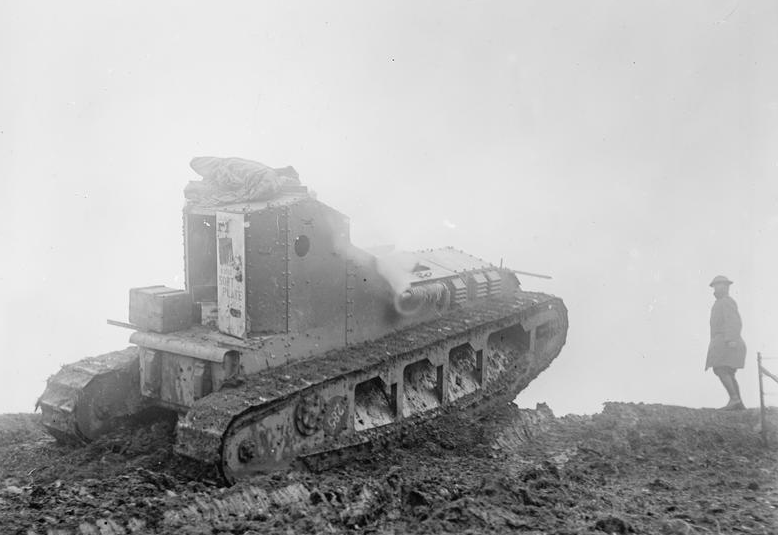
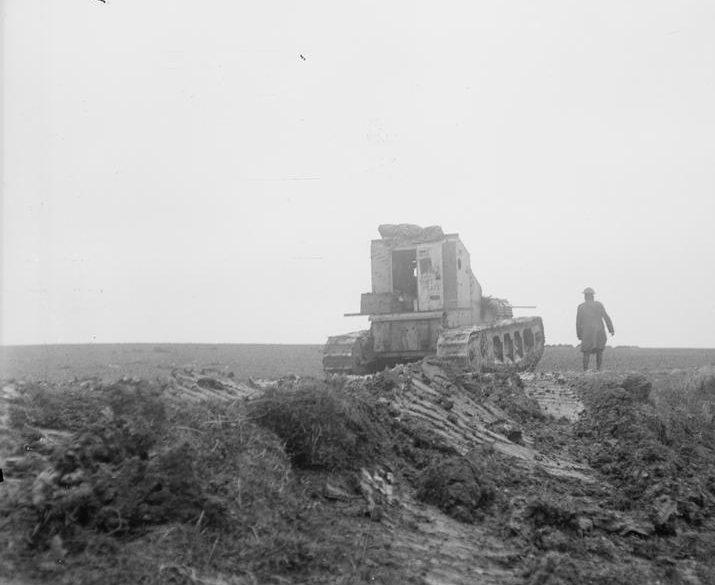
One of the first production models, serial number A202, which was built in mild steel ‘soft plate’ (see door). Pictured here near to Albert, France in April 1918. Why this unarmored and unarmed early production Whippet is there can only be speculated on. Photo: IWM
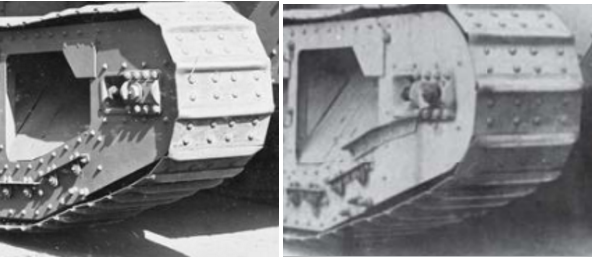
Additional front metal bracket added to some Whippets the purpose of which is unclear.
These 200 vehicles were each assigned a serial number from A200 up to A399. The first Whippets to arrive in France were delivered in December 1917 and were involved in combat from then on. In April 1918, Tritton visited the front once more and discussed the Whippet and possible improvement which may have been mainly connected to the conditions inside the vehicle which were unpleasant. The heat and fumes from the engine, the fumes from the machine guns all meant that the vehicle could become stiflingly hot and tiring for the crews to operate. On top of this, the exhaust was vented on the side of the vehicle ahead of the crew space meaning, as it traveled forwards, exhaust gas could both obscure the view of the crew and re-enter the vehicle making the conditions inside even worse. The only relief from these conditions would be to open the small roof hatch which was intended for the commander to use when guiding the vehicle or the large rear door. Obviously keeping those open in combat was extremely hazardous.
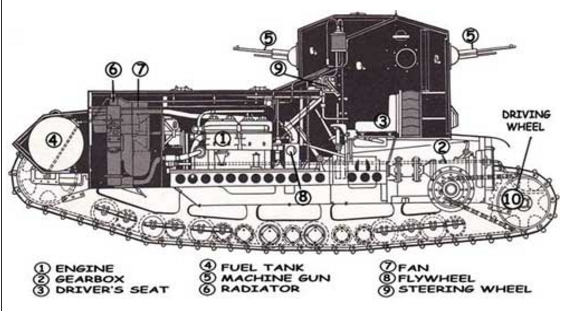
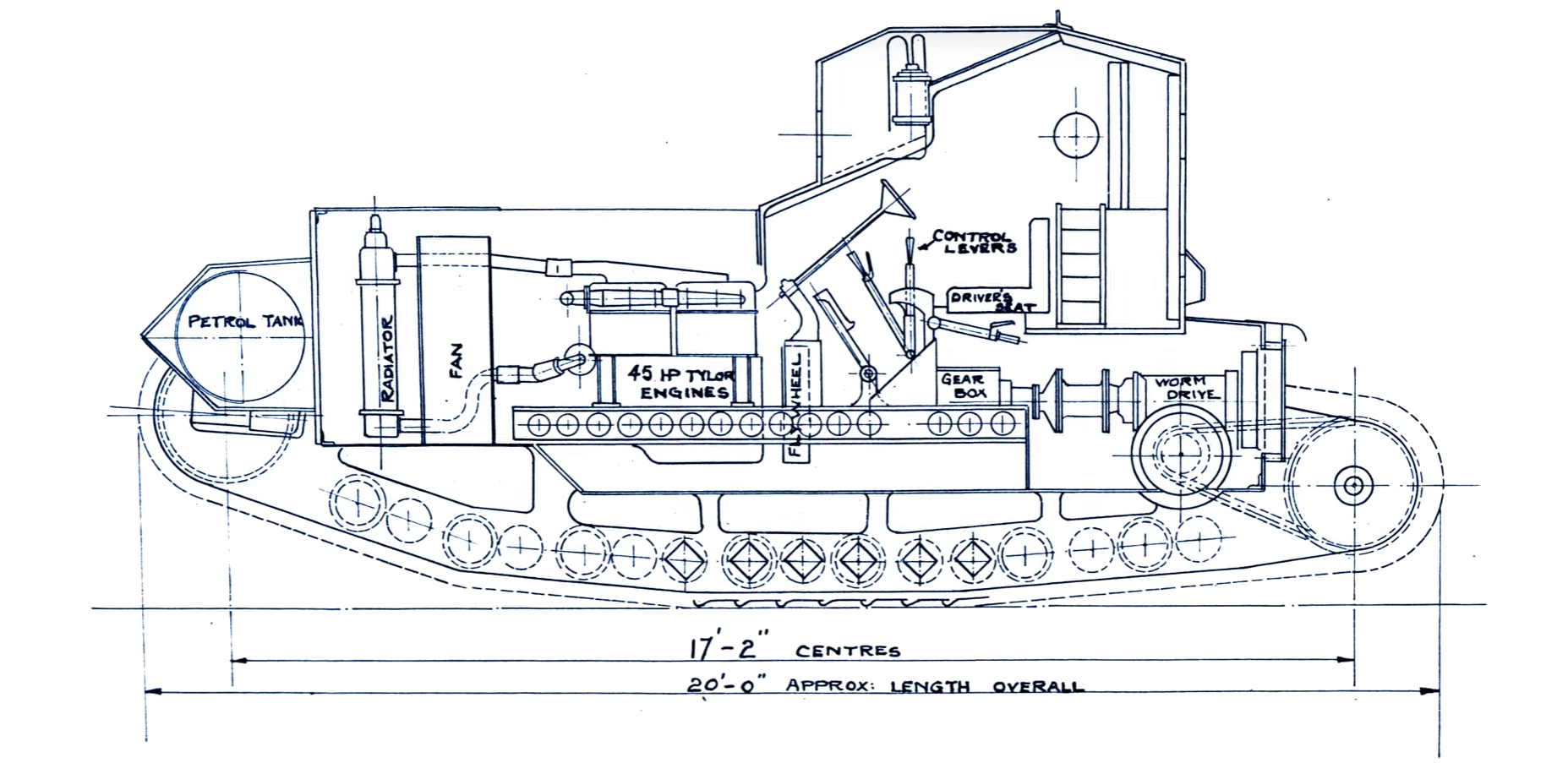
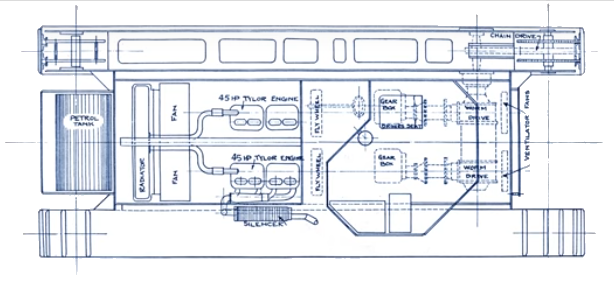
Asymmetric layout of the Whippet tank. Note how the polygonal cab structure protrudes over the track run on the left hand side of the machine
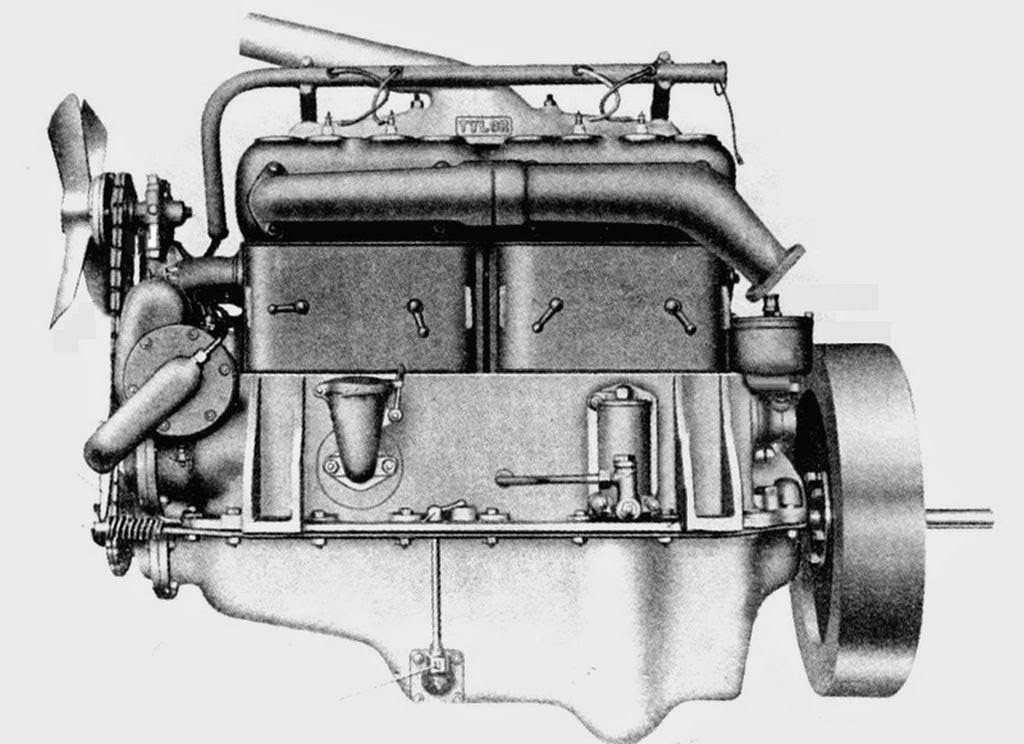
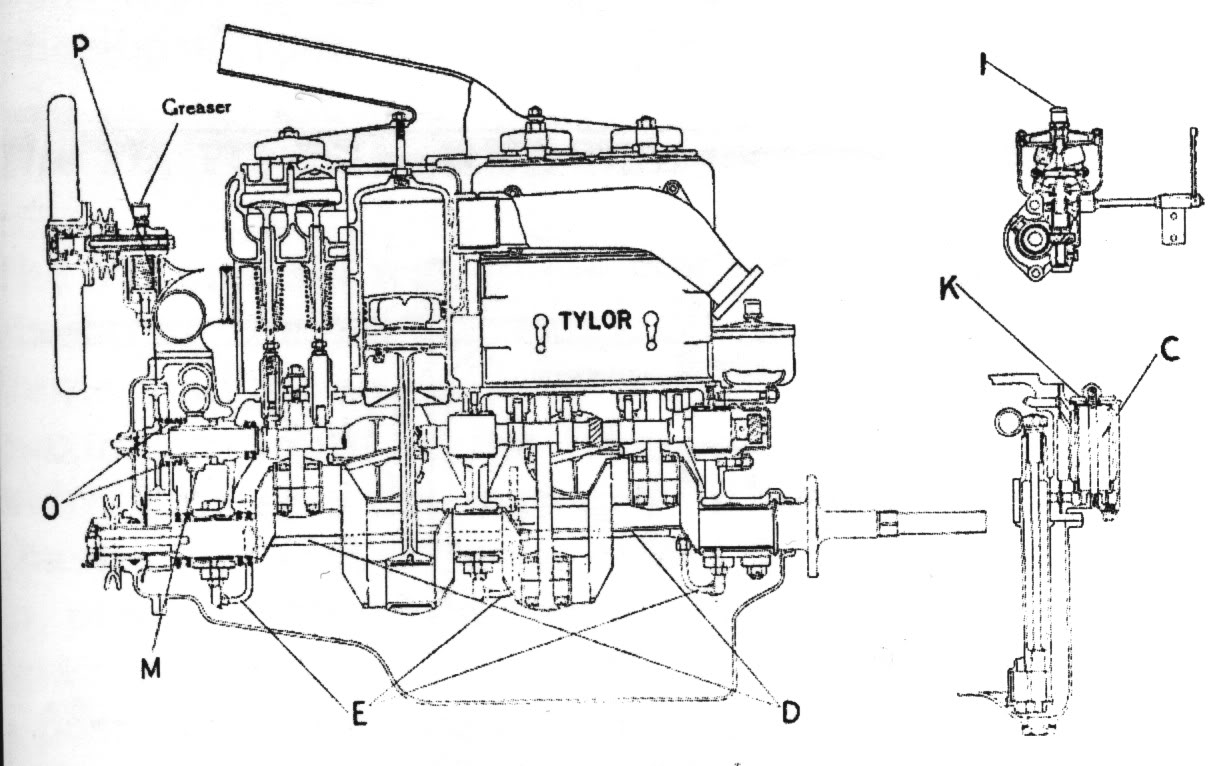
The 7.72 liter 45hp Tylor engine as fitted to the Whippet tank. This side valve water cooled unit was manufactured by the Tylor Company of London and was also used (singly) on the War Department AEC Y Type 3 ton truck
In service, some Whippets were fitted with large wooden stowage boxes on the back supported by an angled steel strap fastened to the cab of the tank. These boxes would provide some much needed stowage for the crew and may also have helped in carrying additional cans of petrol. Many vehicles in service are festooned with petrol cans to extend the operational range of the vehicle.
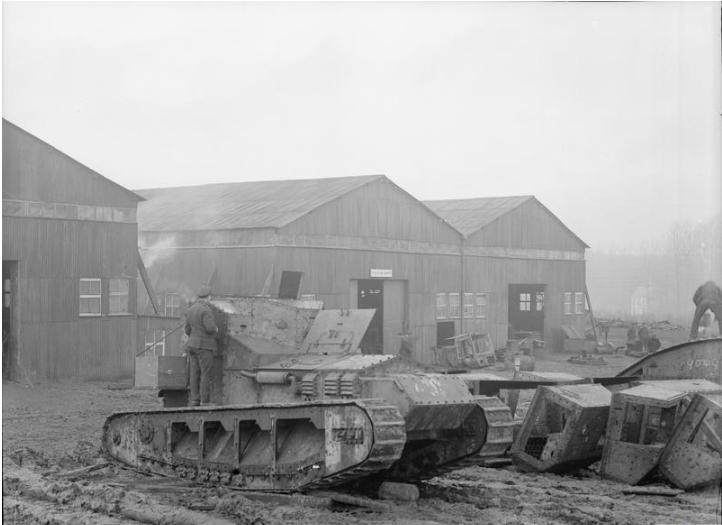
Whippet tank next to a row of sponsons, Tank Corps Central Workshops, Teneur, France, Spring 1918. The photo provides a nice view of the engine access panels as well as the wooden stowage boxes. Photo: IWM
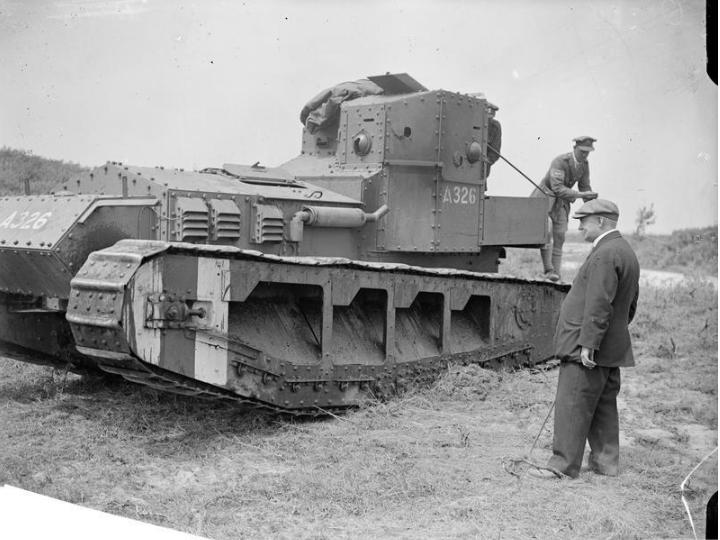
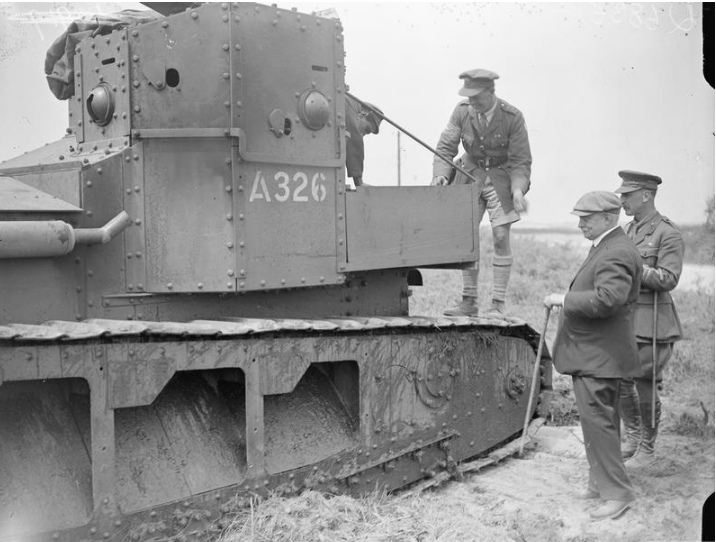
Two views of Sir Edward Patrick Morris, the Prime Minister of Newfoundland (Canada), on his visit to the Tank Corps Gunnery School at Merlimont, France on the 2nd July 1918 examining A326 showing the wooden stowage box and steel spud strap clearly. A326 was later stripped for spares and all but scrapped by August 1918 but was later one of the Whippets sent to Russia in 1919. Photo: IWM
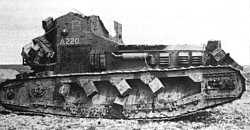
A220 carrying piles of kit on the back, several petrol cans suspended from the top of the mud chutes and items strewn over the front too. The 3 rectangular items on the right of the cab next to the exhaust are wooden track spuds although these are more commonly seen carried at the back. A lot of vehicles can be noted to have a steel strap riveted hanging around the sides of the cab on which to hang items. A220 was later captured by the Germans and subjected to various trials sporting a large black cross on the sides. Photo: IWM
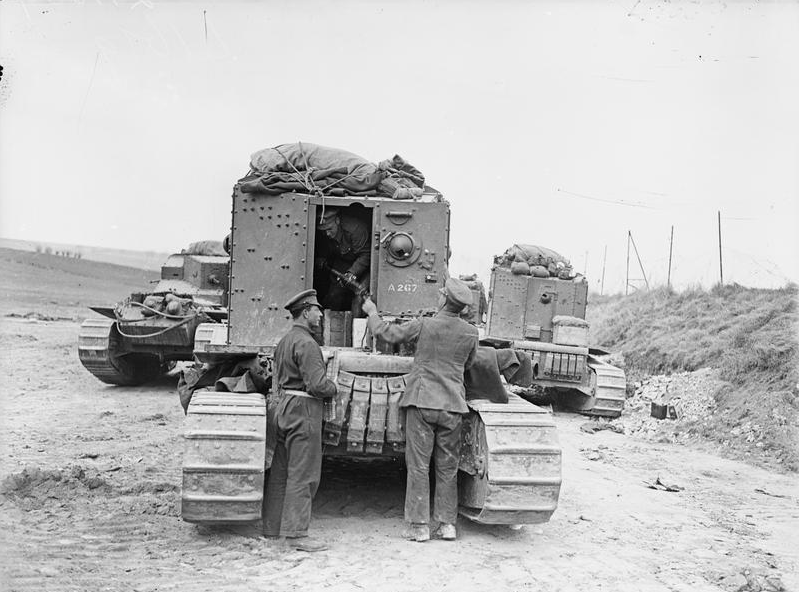
Nice study of the rear of Whippet A267 ‘Cork II’ pictured April 1918 near Albert, France showing the usual method of hanging the wooden track spuds and a typical assortment of kits stowed wherever the crew can put it. The vehicle on the left has a towing cable around the nose. Photo: IWM
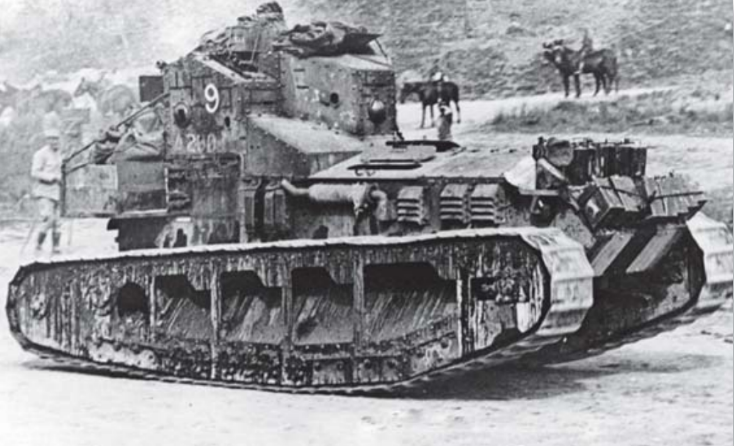
A290 (probably) heavily festooned with an array of kit and clad in petrol cans. (A290 was known as ‘Cherubim II’) Close examination shows the use of small black stripes near to the vision slots which were added with the intention of making the targeting of the vision slots harder for enemy snipers. Photo: IWM
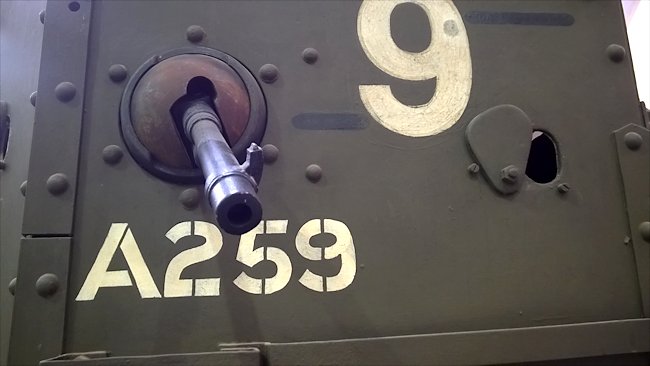
Black false vision slits (which have faded – look bottom left and top right of the ‘9’) as shown on A259 Caeser II at Bovington. Note the rudimentary additional vision/pistol port provided in the superstructure. Photo: tank-hunter.com
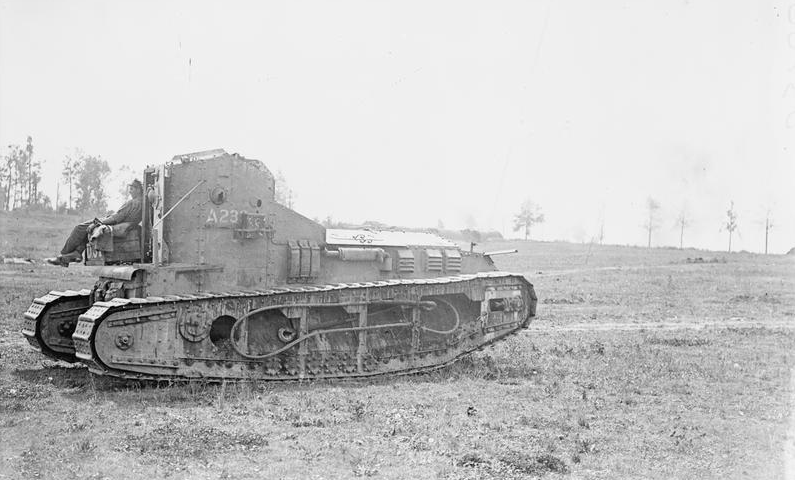
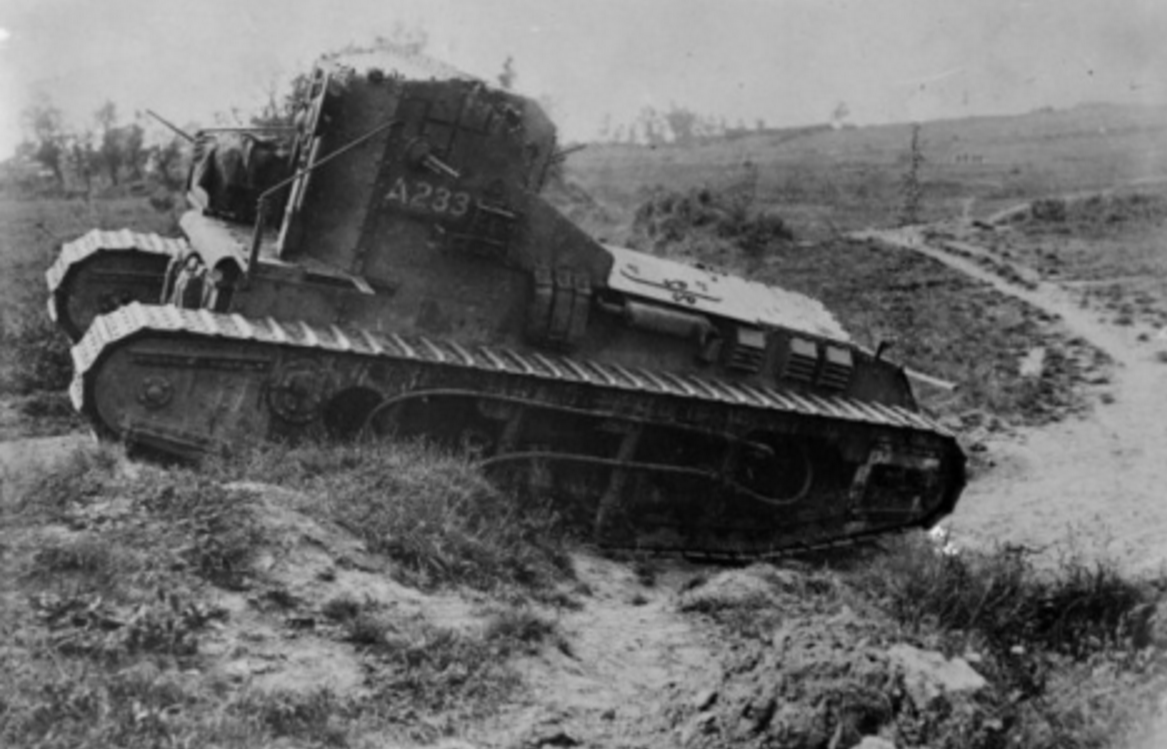
A233 ‘Crossmichael’ pictured at Biefvillers, near Bapaume, France on the 24th of August 1918 is relatively uncluttered but with a towing cable fastened the tight right hand side. Photo: NAM and IWM
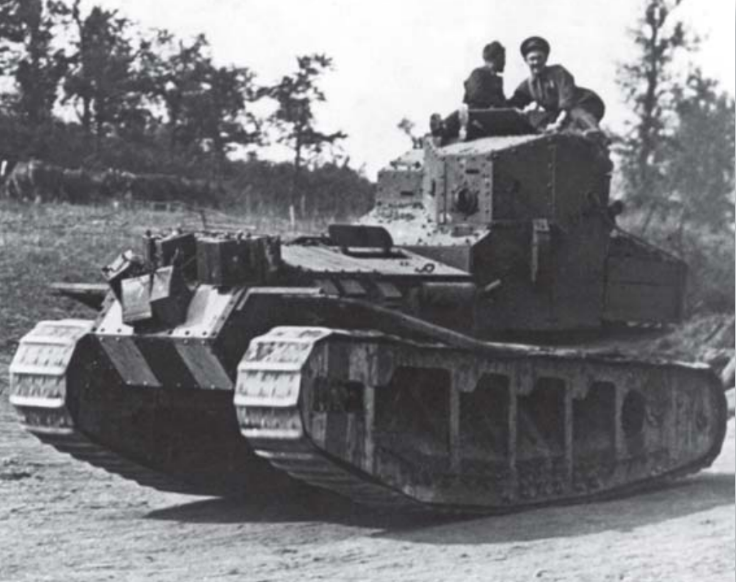
Whippet in service at Demiun near Amiens, France showing stowage boxes at the back, the canvas mud guards in pace and multiple cans of petrol strapped to the nose of the tank. A single track spud is hanging from the cab on which two of the three crew are riding to avoid the unpleasant conditions inside. There was no such relief for the driver. Photo: IWM
Tales of daring do
The Medium Mark A Whippet was to see its first combat on the 26th March 1918 at Mailly-Maillet, north of Albert, France. It had been considered to send Whippets to the Army in Palestine too but that didn’t happen. The Whippet tank was to enjoy some notable combat actions most famously the actions of Musical Box (A344), and Caeser II (A259).
On the 8th August 1918, near to the town of Villers-Brettoneux, France, Whippet A344 known as Musical Box was about to become a legend. In command of the tank was Lieutenant C.B. Arnold. It began an attack with 7 other vehicles, which for one reason or another being stuck or suffering mechanical failure. This left Musical Box on her own to support some Australian Infantry and Mk.V tanks attacking the German lines. Musical Box attacked a battery of German field guns, which was somewhat suicidal at best but scattered the Germans with its machine guns allowing the Australian infantry to advance into the German position.
Lt. Arnold pressed on regardless for several hours resulting in the dispersal of a large segment of a German infantry division, a transport column and even an observation balloon. The combat had caused the cans of petrol carried on Musical Box to be perforated leaking petrol dangerously into the tank so much so the crew were having to wear their respirators. Eventually, Muscial Box was crippled and set on fire by a direct hit from a German gun and the crew bailed out. The driver was shot but he and the machine gunner were captured. Lt. Arnold survived the war as a POW having inflicted a loss on the Germans far out of proportion to what could be expected.
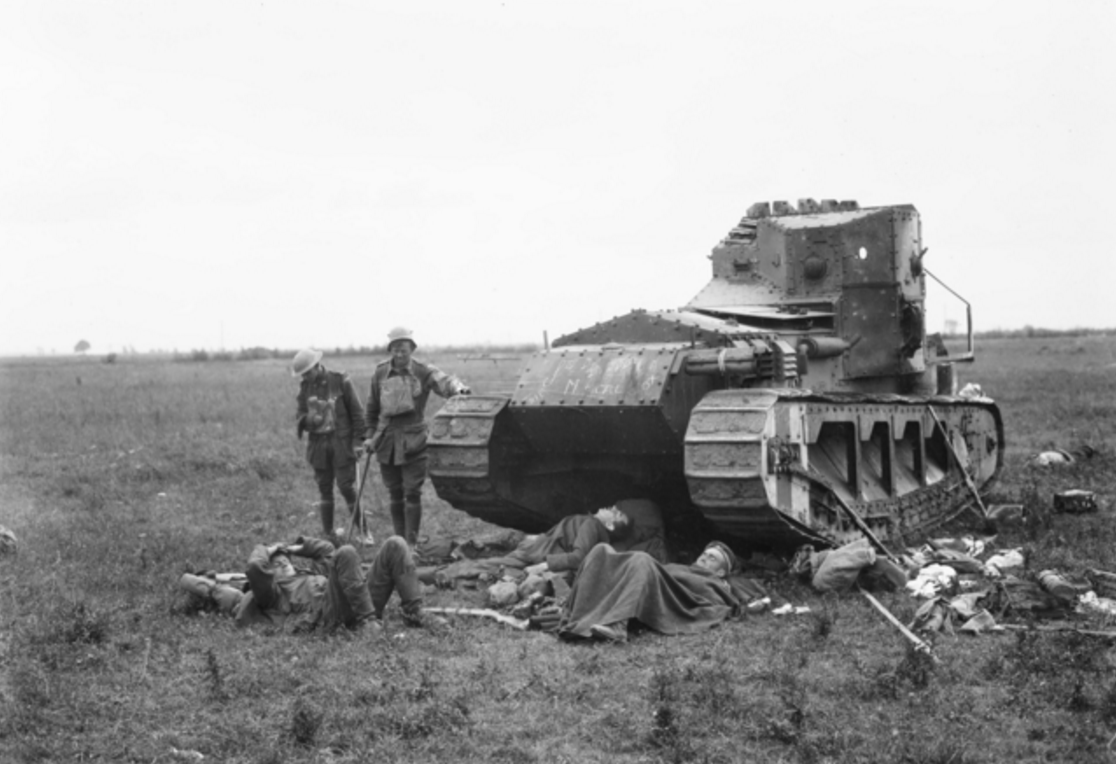
Burnt out remains of A344 Musical Box pictured the day after the incredible fight with Australian soldiers of the 15th Brigade and some German prisoners.
On the 29th August 1918, Caeser II (now preserved at the Bovington Tank Museum), commanded by Lieutenant Cecil Sewell, was with the 3rd Battalion Tank Corps at Frémicourt, France. During this action, a fellow tank had slipped into a shell hole, overturned and caught fire trapping the crew inside. Sewell stopped his tank and ran out across open ground in full view of enemy fire digging out the door of the tank so the crew could escape a horrible fiery death. His own driver was wounded in this time and he went to his aid but was hit by enemy fire while doing so. Nonetheless, he got to his driver and while rendering medical aid was hit once more, this time fatally by enemy fire. For his heroism and total disregard for his own safety Lt. Sewell was awarded the Victoria Cross.
A final and more minor note of interest is that in combat in March 1918, A226 ‘China II’ resorted to borrowing a single infantry Lewis gun to replace battle damaged Hotchkiss machine guns, so, on at least one occasion, a production Whippet did use a Lewis gun.
The downside
Despite the Whippet having been designed and been up and running as a prototype in a very short time the pressures of mass production had meant that delivery of the Whippet was rather slow. The tank itself wasn’t really of any use in combat until 1918 and although the Whippet was proven to be quite useful in combat the flaws in the design were apparent. The machine guns were prone to jamming and the armor was vulnerable to anti-tank rifle fire. The steering was awkward at best and dangerous at worst.
The habitability of the vehicle was very poor and the poor driver had his work cut out steering and getting a good view of the path ahead. The Germans, though, who had captured at least two fully functional vehicles, were by all accounts impressed with the speed. Obvious parallels are drawn between the German LK II vehicle, which was still in the pre-production phase at the time of the Armistice, and the Whippet. Quite how much influence it had on the design is still debated.
Johnson’s Whippet
One particular variant of the Whippet which sadly led to nothing was a modification carried out in 1918 by Colonel Philip Johnson. The unsprung Whippet with the 6 Skefco roller bearings was modified by means of fitting leaf springs transversely beneath the hull. The twin 45hp Tylor engines were replaced with a single V12 Rolls Royce Eagle petrol aero engine and the Walter Wilson designed transmission from a Mk.V just visible in the lines of the rear of the vehicle.
The new larger engine is shown by the much larger front hull shape with the lines of the original size still visible. With this new spring suspension and much more powerful engine this vehicle was capable of 30 mph (48 km/h) and retained the same polygonal superstructure of the original. Sadly this machine was a dead end for the Whippet as it was just too expensive, Colonel Johnson though went on to other projects.
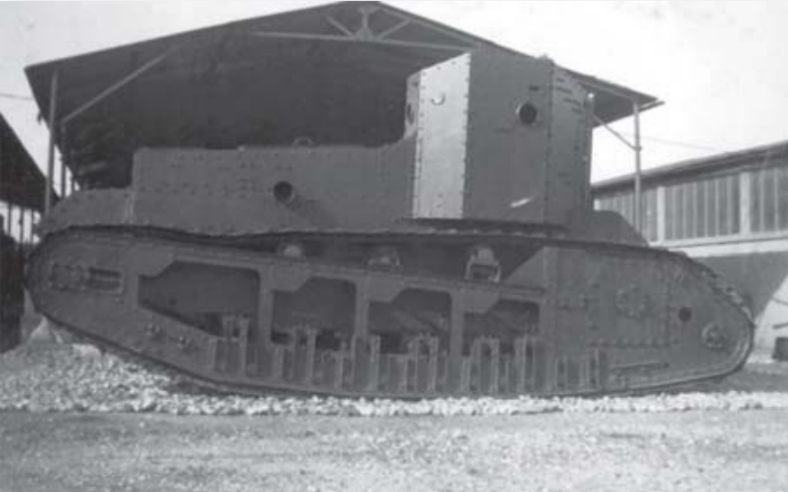
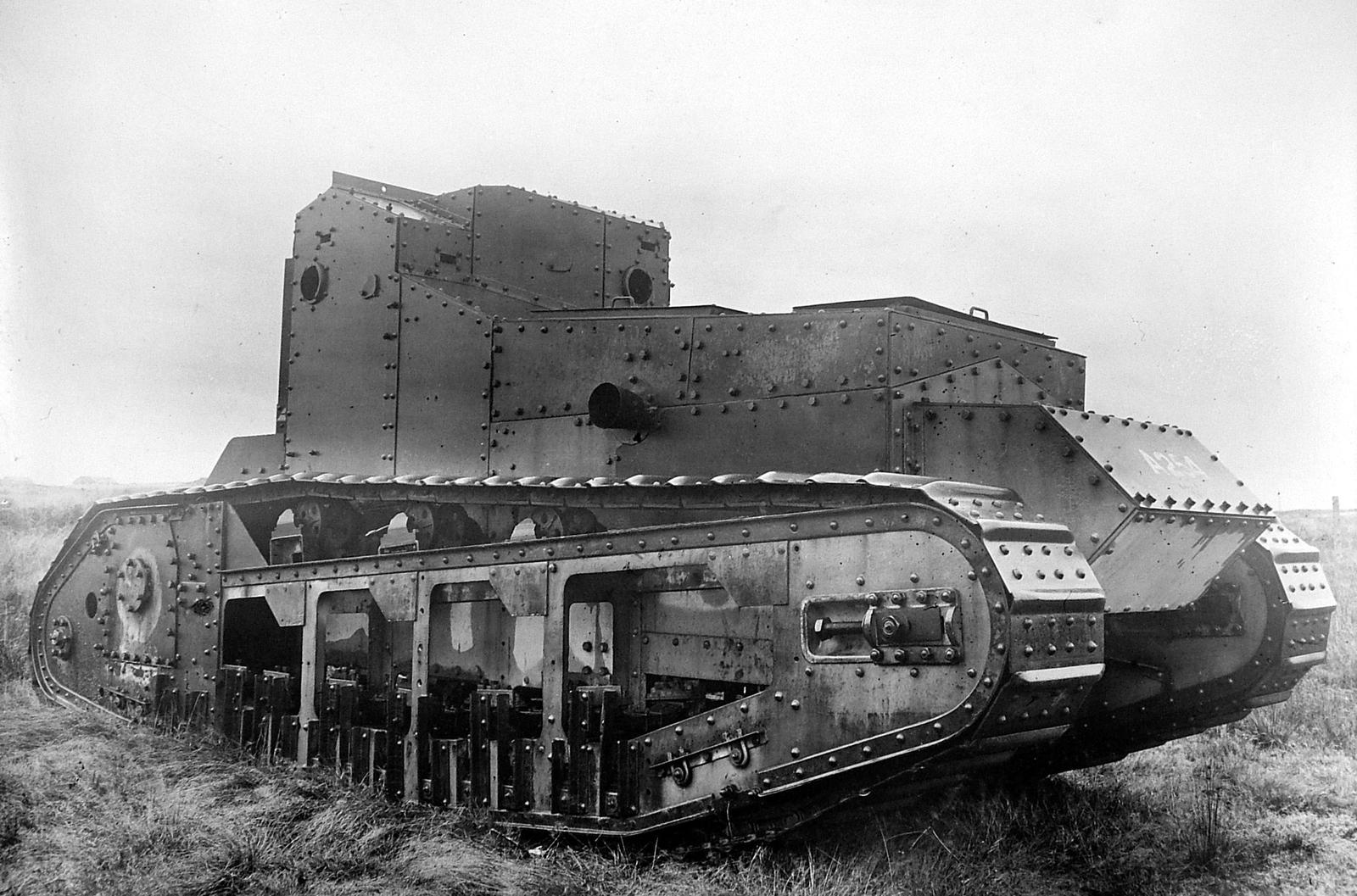
Colonel Johnson modified Whippet showing expanded engine area for the Eagle engine. It’s possible the nose says A214 which would make sense as A214 was severely damaged at Bray, France including the loss of the engine so this prototype could have been rebuilt using that wreck and other parts. Chamberlain and Ellis however state this vehicle was modified in two stages, first the spring suspension and then later the engine area which would invalidate this theory. Photos: Beamish Archive courtesy of the author and IWM
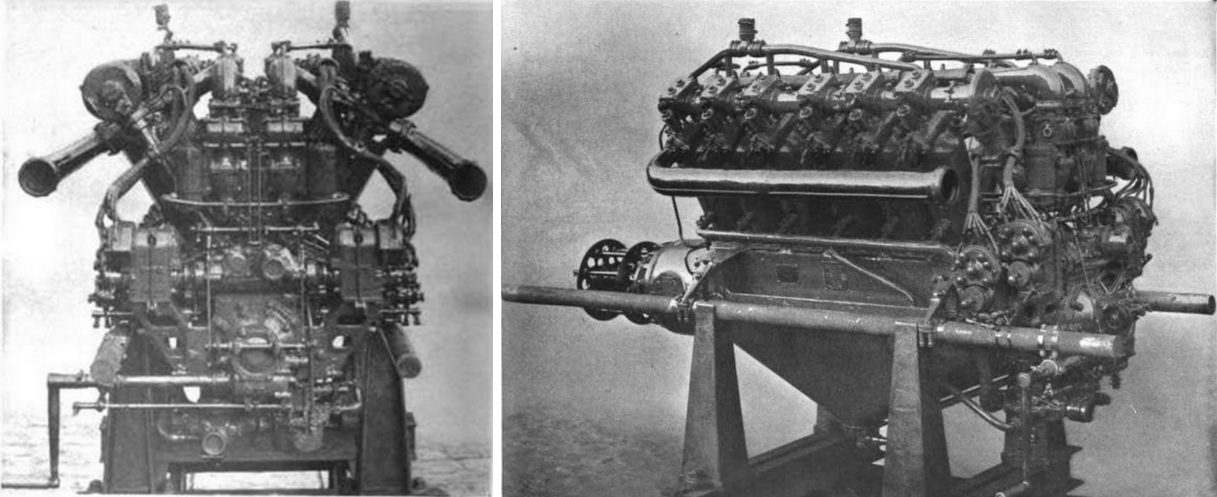
V12 Rolls Royce Eagle engine. ~300hp at 1800 rpm. Photo: Sherbondy
That time the Army gave a man a tank
One final oddity for the Whippet in British service is this vehicle which was handed over to Commander Baynton Hippisely RN for some experiments in Bath, England.
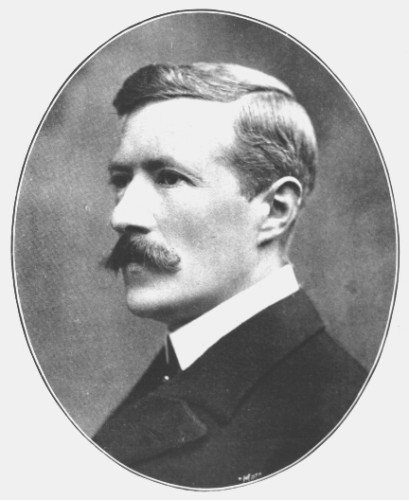
Baynton Hippisely pictured in 1908, then an officer in the North Somerset Yeomanry. Photo: Public Domain
Bayntun Hippisley was born in July 1865 and retired from the Army in 1913. His family was well-to-do with an estate at Ston-Easton, near Bath in Somerset. At the outbreak of WW1 Hippisley, who was considered an expert and pioneer in the use of wireless telegraphy was recruited by Naval Intelligence. He was given the rank of Commander (RN) (Temporary rank listed 17/12/1915) and set to most secret and vital work intercepting wireless communications from German U-boats and Zeppelins.
During the war, he was personally issued a Whippet tank for “tests of a secret nature” on his estate. The vehicle concerned is recorded by him as being A381 which is known to have served with the 6th Battalion Tank Corps in October 1918 when it received some damage and was immobilized. The nature of the experiments Cmdr. Hippisley conducted is not clear and the vehicle had no obvious external differences to a standard Whippet save for some bullet scars. It’s possible that he was primarily occupied with wireless work with it but with the end of the war he seems to have made use of it more as a tractor on the estate maintaining the engines and hauling timber and trees or pulling them down etc.
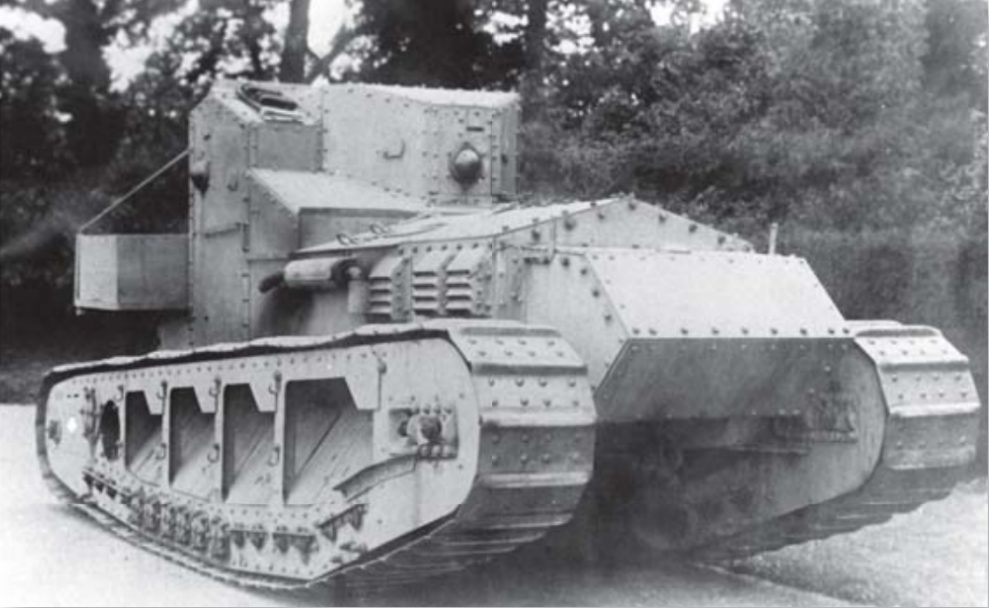
Commander Hippisely’s Whippet A381 at his estate
The vehicle remained with him until March 1936 when he states that he received a letter from the War Office officially disposing of it and giving it to him as a free gift. He had already received for his war service an OBE (Order of the British Empire) in 1918 and in 1937 the CBE (Citizen of the British Empire). The tank appears to have been the last operational Whippet tank too when sadly in 1942 at the request of the Ministry of Work and Planning it was sent for scrap for the war effort.
Disposal and new life
Despite the success of the Whippet in combat and the potential work like that of Colonel Johnson had shown, the Whippet wasn’t going to be built anymore. Tritton already had his own improvements in mind and the Whippets left over after the shooting war on the Western front ended in November 1918 were progressively decommissioned. Many were scrapped or sold off. 17 vehicles were deployed/sold off to the white Russian anti-Bolshevik forces but to little avail with an initial 6 sent to General Deniken followed by 11 more in July 1919. Either destroyed or captured during this bitter civil war, at least one vehicle was rearmed by Bolshevik Russian forces with a 37mm gun.
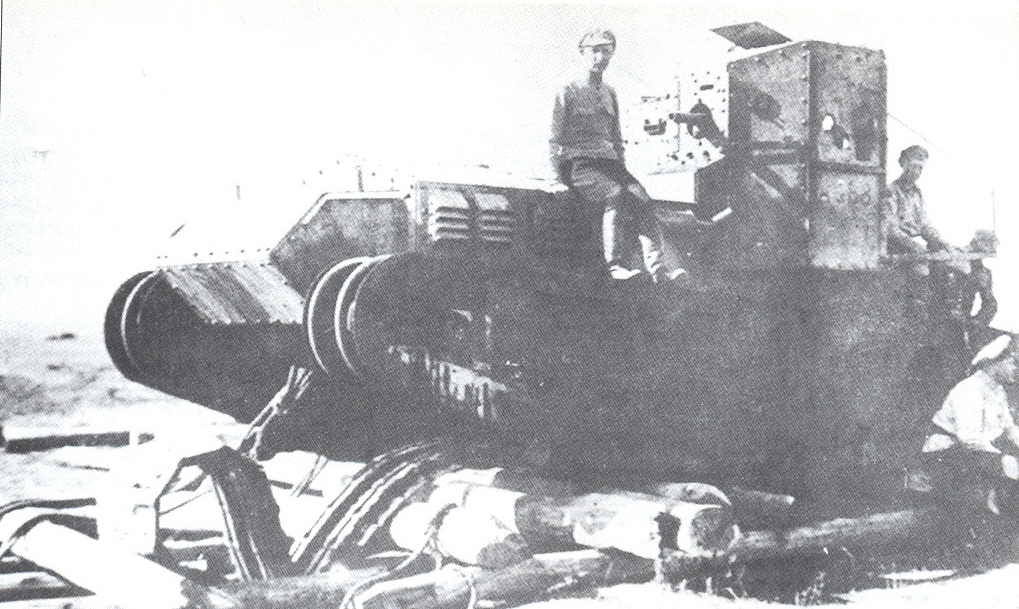
Russian Whippet rearmed with a short barrelled 37mm cannon in place of the forward facing machine gun. Noteworthy is that this vehicle still retains on the nose the White-Red-White British markings. The markings were also commonly repeated on the front ‘horns’ of the vehicle on both sides and on the top of the engine to assist aircraft. On the horns, the vertical bands are 1ft (30cm) wide each.
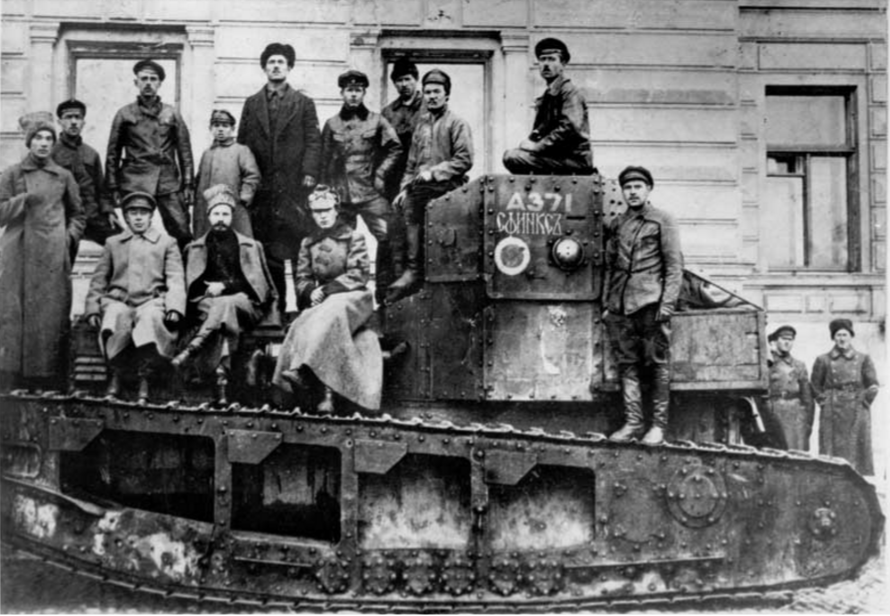
A371 Sphinx in use by Russian forces showing the signs of wear and tear as well as the surprisingly large size of this tank
In Russian service, the last of the Whippets disappears in about 1922 presumably to scrap although in Russian service they were known as ‘Tylors’, or ‘Teiylors’ after the brand of engine.
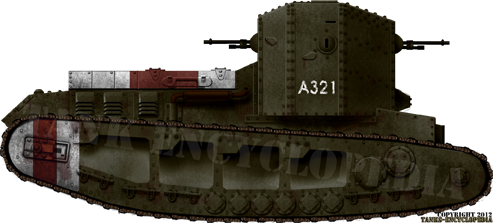
One of the first Mark A in operations, in March 1918.
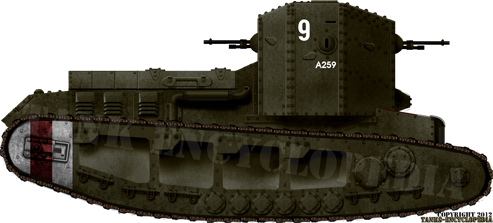
A late Whippet, A259 “Caesar II”, now in the Bovington tank museum.
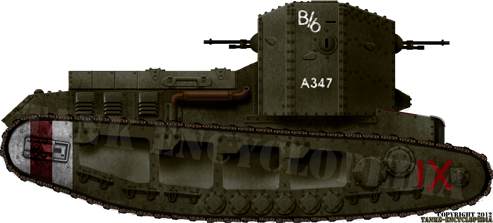
The A347 “Firefly” of the sixth battalion, B company, one of the numerous “X-companies” attached to larger units made of heavy Mk.IV and V during April-May 1918. This one is now displayed at the Royal Museum of the Army in Brussels.
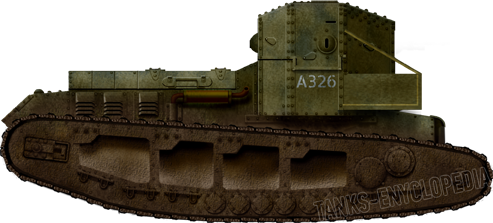
Whippet with rear storage
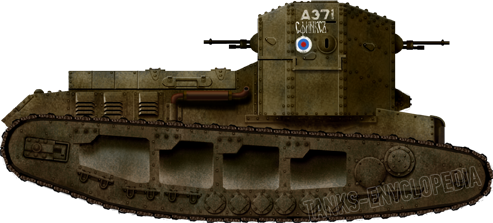
White Russian Whippet “Sphinx” with Wrangel’s 1st tank division, 2nd Det. South Russia 1920.
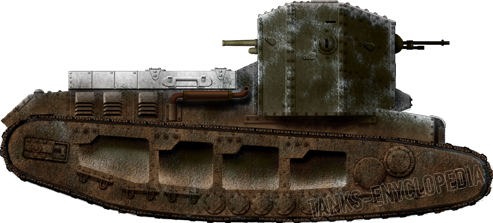
Captured “Red” Russian Gun Whippet rearmed with a 37mm gun, winter 1920
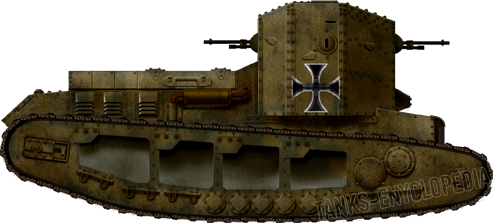
Beutepanzer “Whippet”
Captured use
As previously mentioned, the Bolshevik Russian forces had made use and modified their captured Whippets. The Germans who had captured at least two fully functional vehicles in 1918 put them both to use. One (A220 shown previously) was subjected to numerous trials. The other vehicle, Whippet A249, which had been captured at Bray, France (South of Albert) in March 1918, was shipped back to Germany where it ended up in the service of the Freikorps following the armistice.
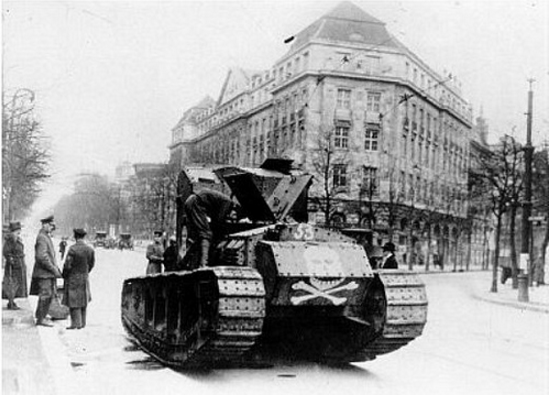
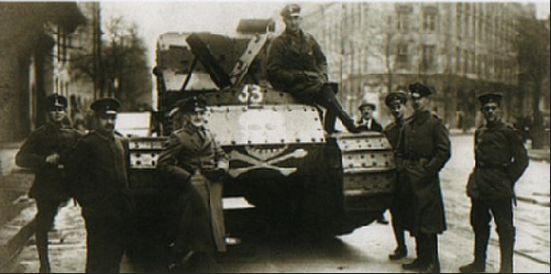
A249 in Freikorps use January 1919 in Berlin. The building behind is the Eden Hotel in west Berlin. Photo: Rainer Strasheim, British Tanks in German Service Vol.2, 2011 Tankograd No.1004
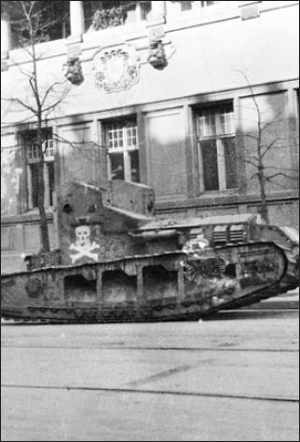
Another view of Whippet A249 in Freikorps service in Berlin post war. Note that the large skull and crossbones has been painted over the large black cross on the side. A249 was eventually taken back into allied hands in 1919 and presumably scrapped.
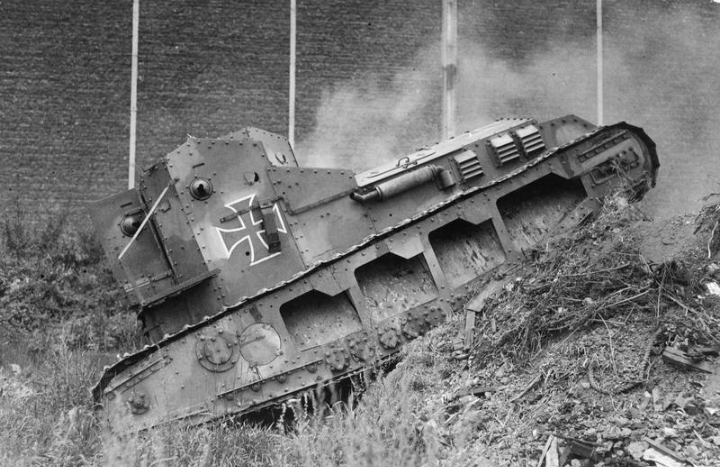
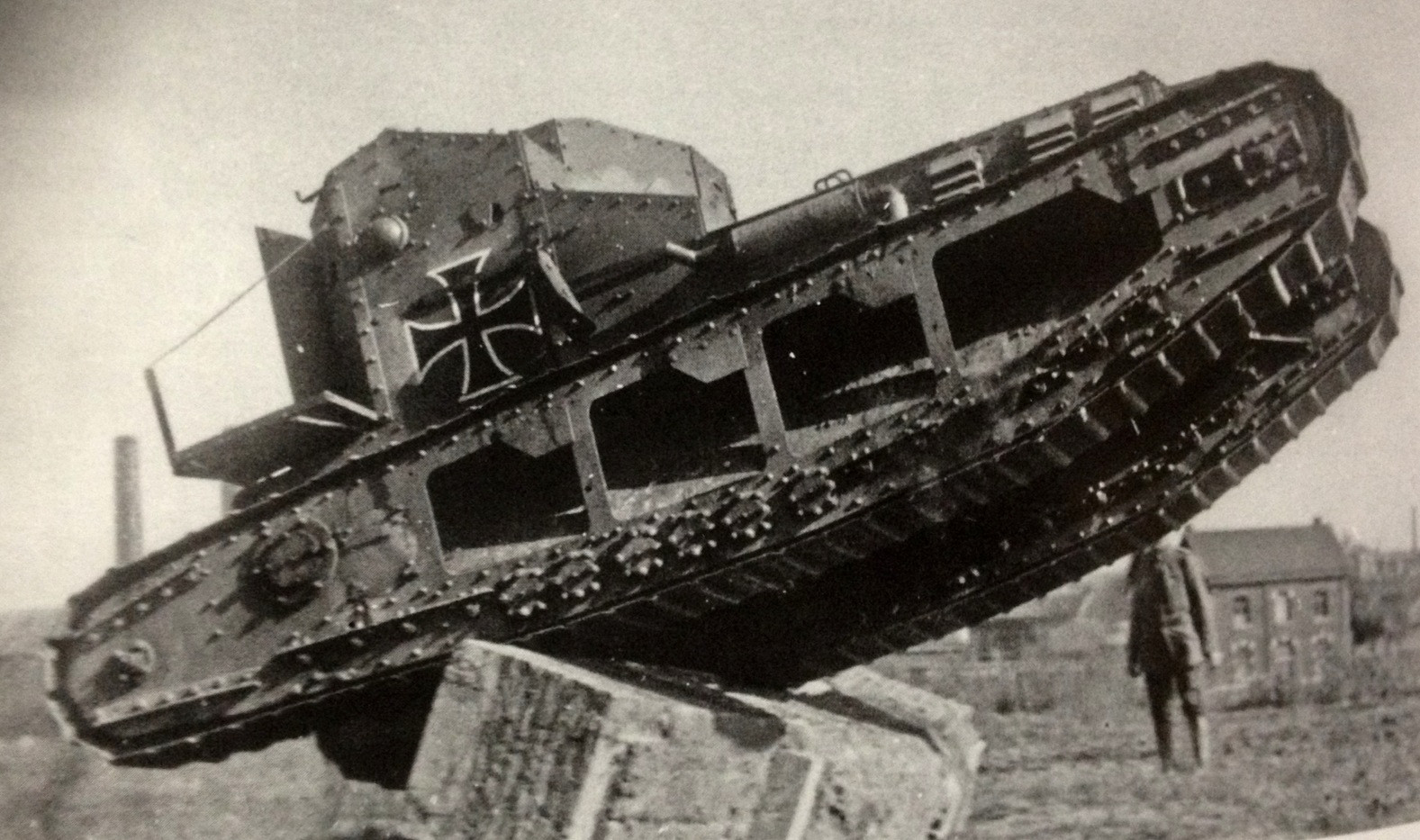
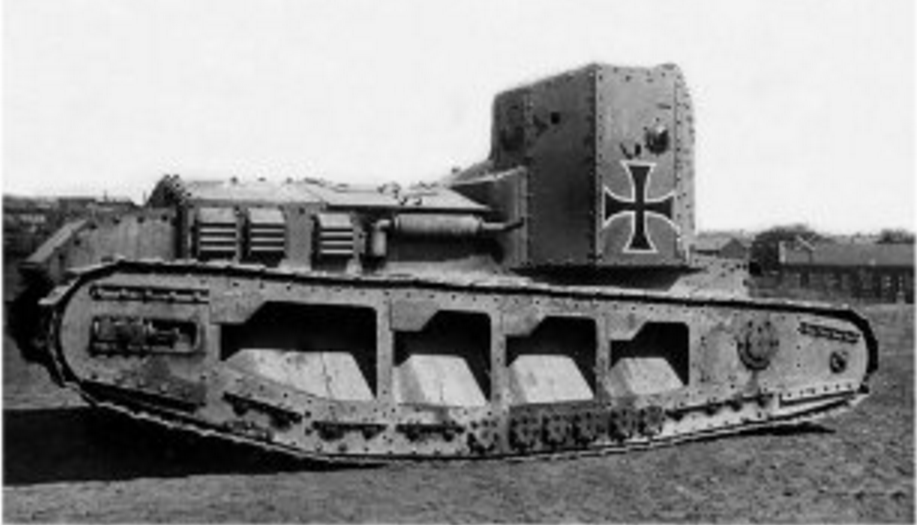
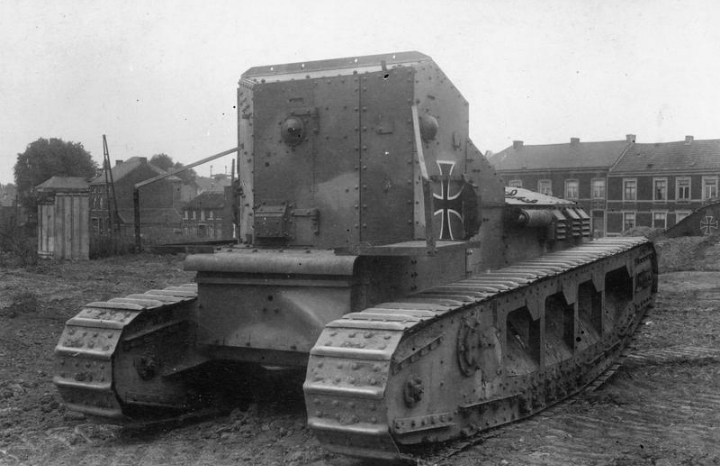
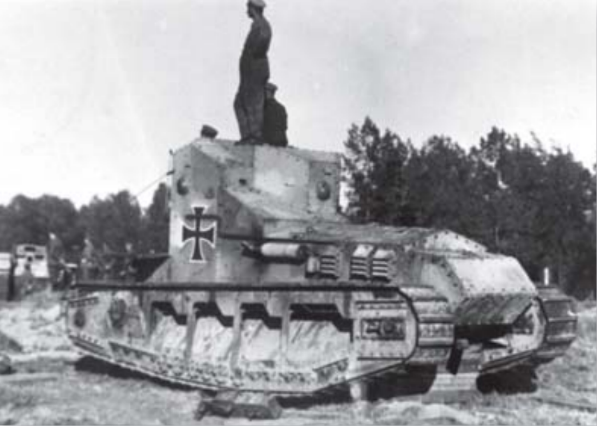
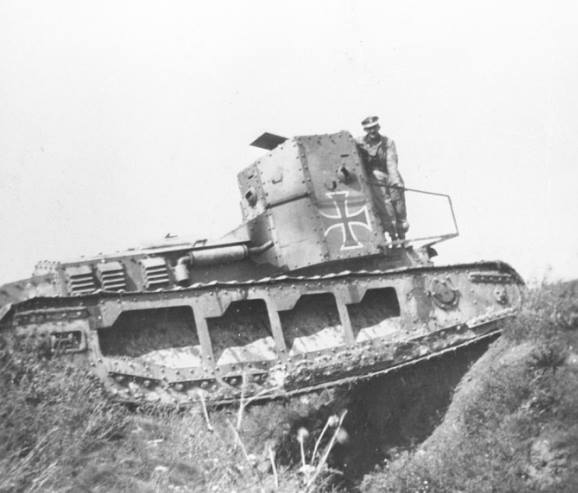
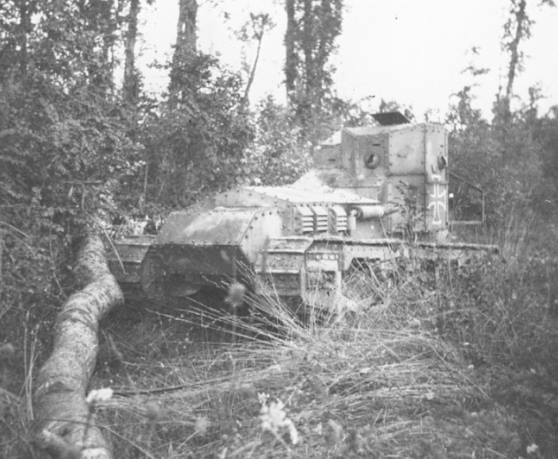
A variety of views of Whippet A220 captured by the Germans along with A249 at Bray in March 1918. Subjected to a variety of tests this vehicle was presumably taken back by the Allies the end of 1918.
Whippet to Africa
One vehicle was purchased by the government of South Africa. A387 was intended to be a memorial and to be used for fund raising events and was named ‘HMLS Union’. HMLS Union however was to be no idle memorial. She was used as a tank during the Rand Rebellion in South Africa of 1922 where it was committed during the assault on the headquarters of the rebels. During this it became either stuck or broke down and was subsequently recovered by means of a steam truck.
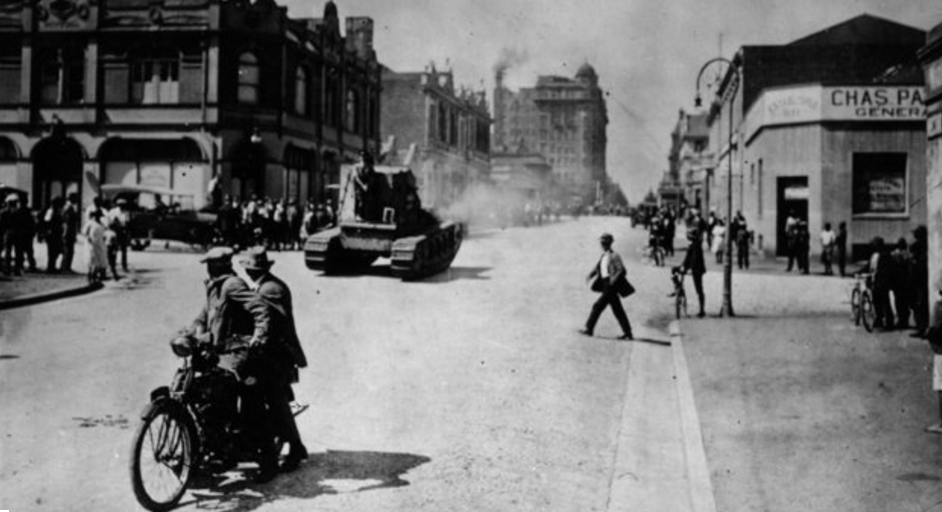
HMLS Union is the focus of attention as she heads into action during the Rand Rebellion 1922 Photo:samilitaryhistory.org

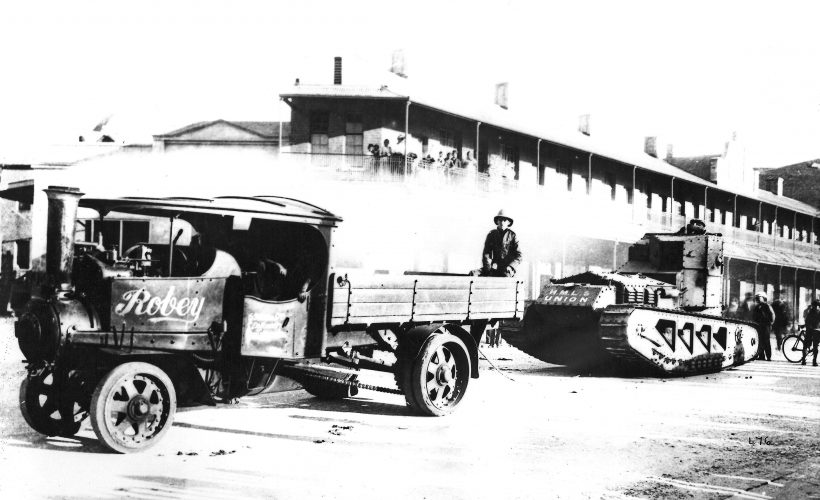
Photo:samilitaryhistory.org
Following the restoration of order HMLS Union appears to have gone back into retirement until 1939 when she answered the call of empire once more in one final hurrah for King and Country. She came back to serve but was never deployed to combat, thankfully because HMLS Union is one of the very few surviving Whippet tanks and is currently on display in Pretoria.
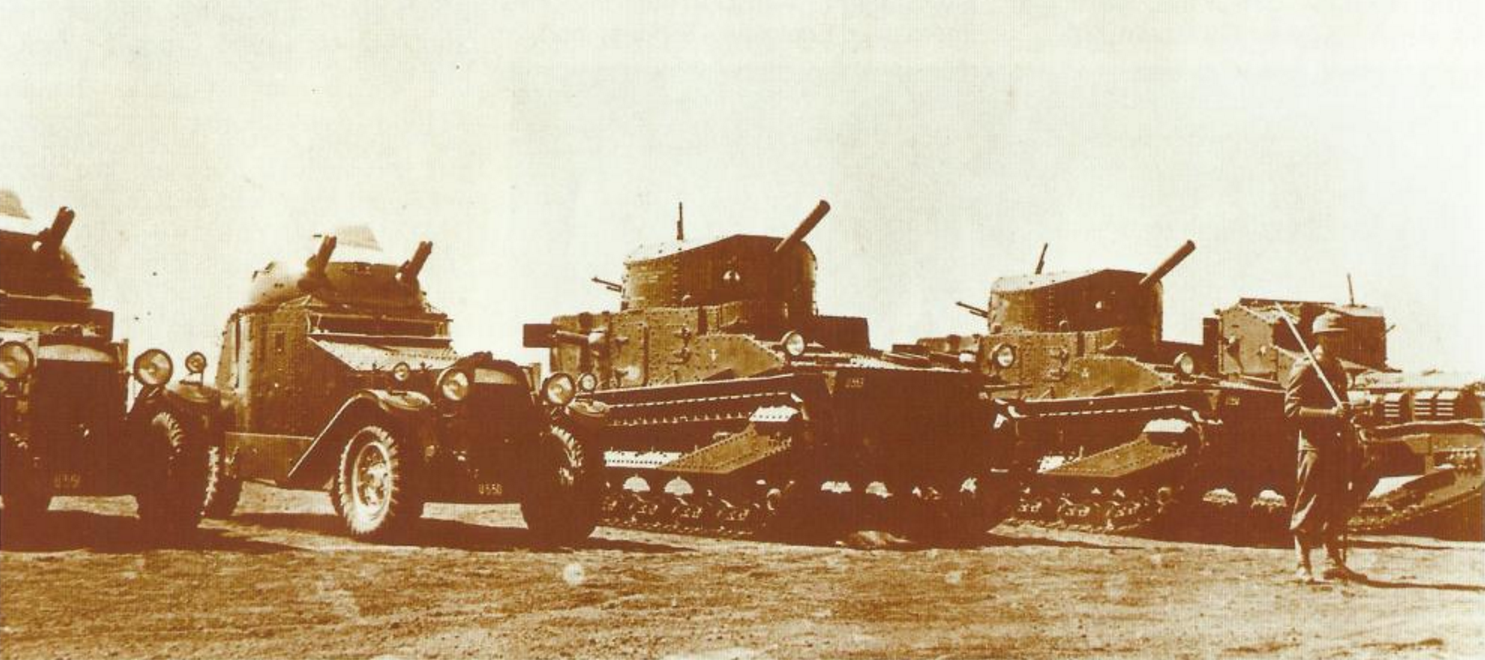
The entirety of S.Africa’s armoured force in 1939 at the outbreak of World War 2 consisting of 2 Vickers Crossley armoured cars, 2 Medium Mk.I’s and HMLS Union. Photo:samilitaryhistory.org
Whippet of the Rising Sun
In September 1918, a further 4 Whippet tanks, A370, A386, A390, and A391 were sold to the Japanese complete with some track spuds. The only notable change made was the addition of a separate hatch for the driver allowing him a better view during a road march.
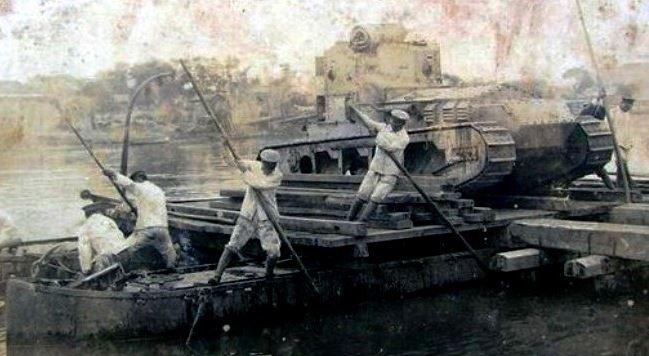
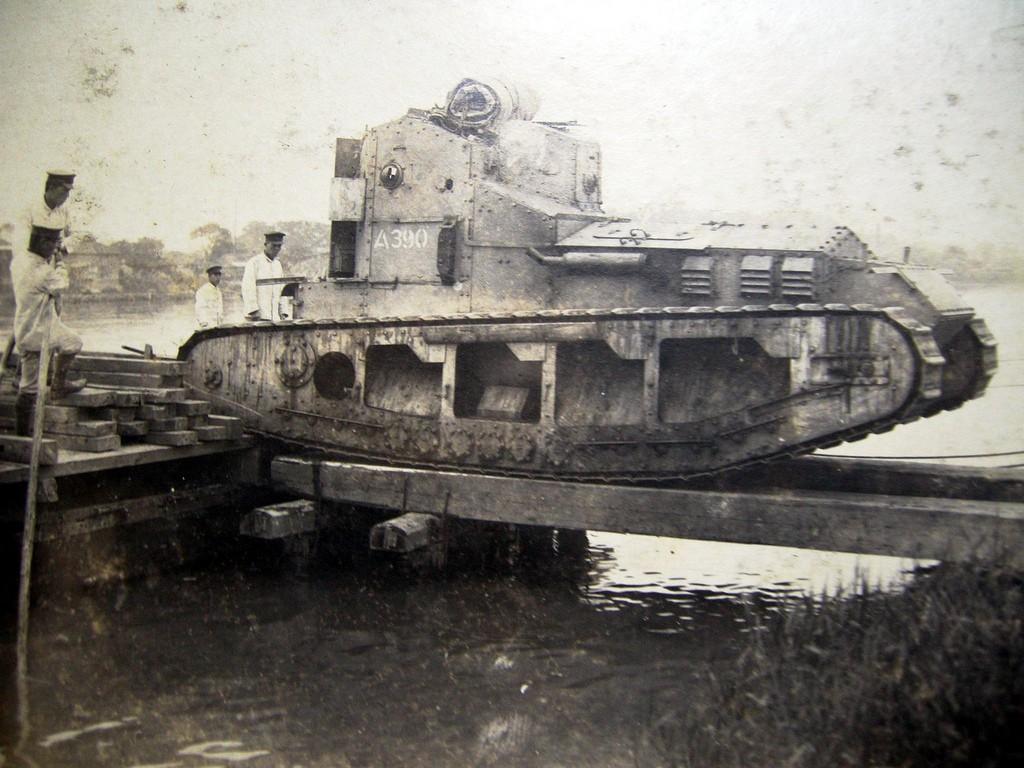
A390 during river crossing exercises. No armament appears to be fitted.
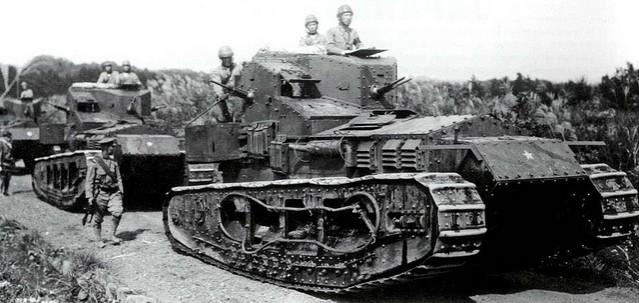
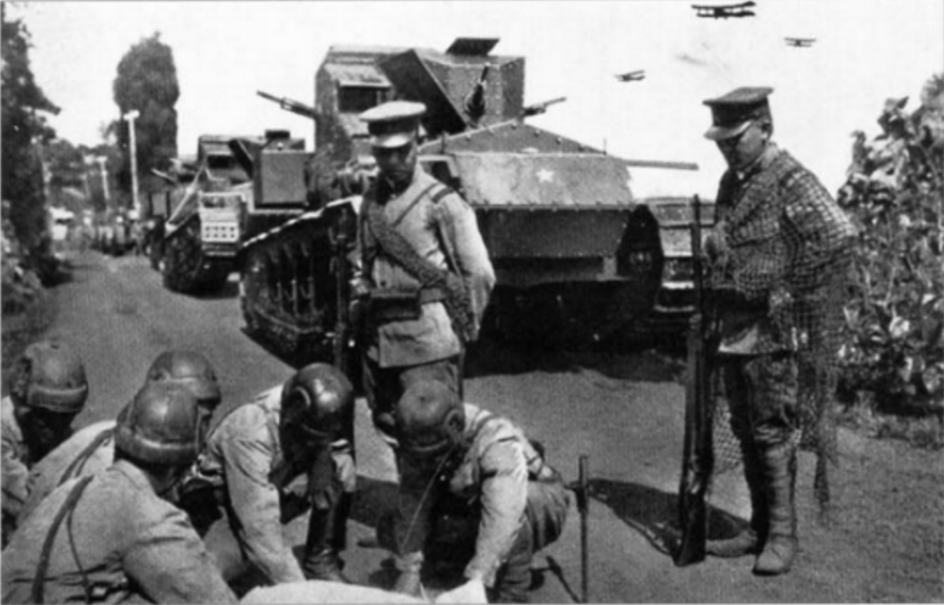
Three unidentified Whippets (the fourth is out of shot) in Japanese service on a road march. All vehicles display a small Army emblem Star on the nose and are fitted with the standard Japanese army 8mm machine guns. Note the view of the modified drivers front plate which is now a moveable hatch improving vision and no doubt ventilation too. Closer inspection shows what appear to be hoops of some description around the exhaust possibly to help keep netting off it. A tow cable is neatly fastened to the right hand side of the lead tank.
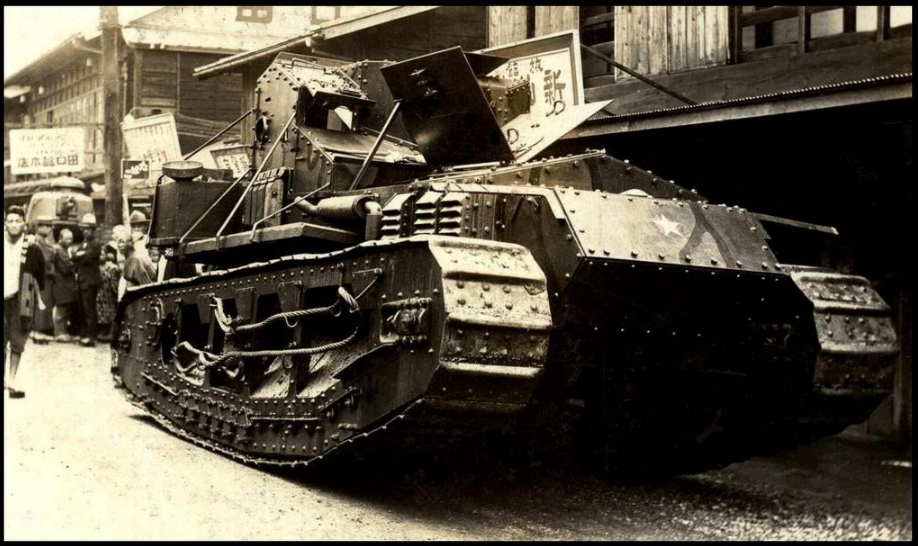
A very detailed photo of an unidentified Japanese Whippet with what appears to be an extemporized running board on the right hand side held up with straps. The metal brackets for the canvas mud guards are still fitted so this modification may be more to do with carrying troops or stores than to prevent mud being thrown up.
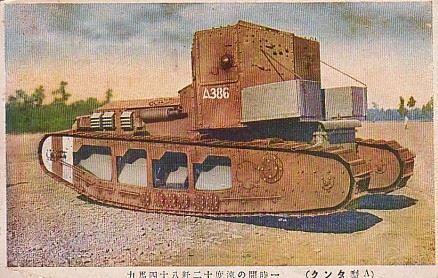
Colourised picture of A386 in Japanese service, presumably shortly after delivery as the British markings are still on show.
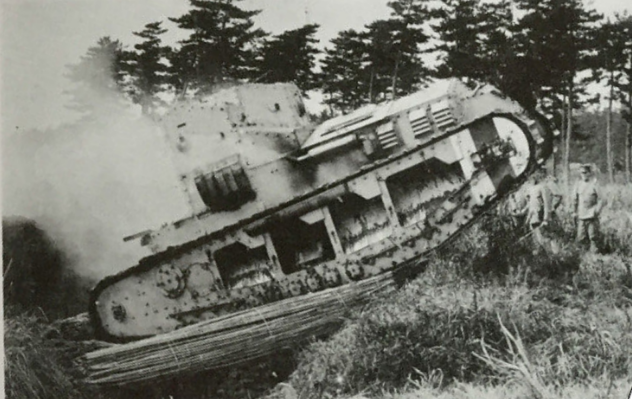
Japanese Whippet being put through its paces. Possibly at Narashino which is East of Tokyo Photo: Shimoharaguchi
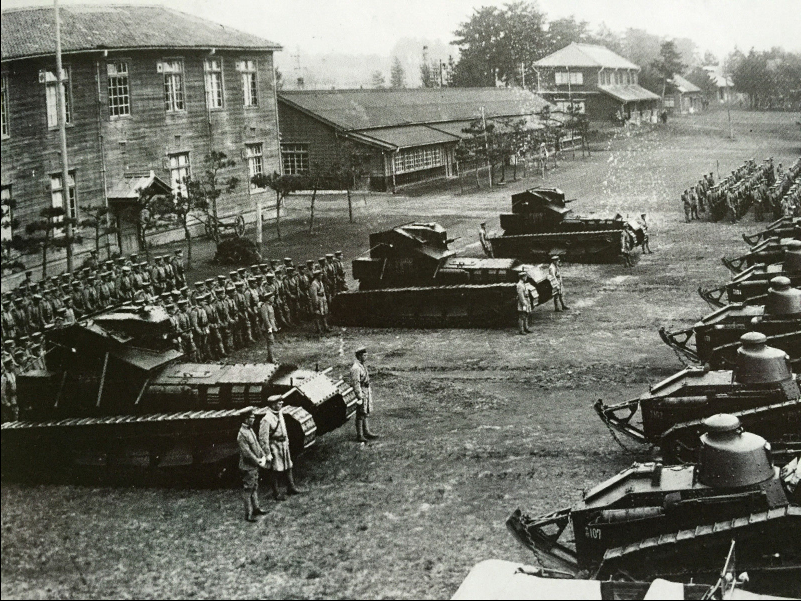
Nice lineup of Whippet tanks arranged behind a row of Renaults at the Imperial Army Academy, Tokyo. Photo: Shimoharaguchi
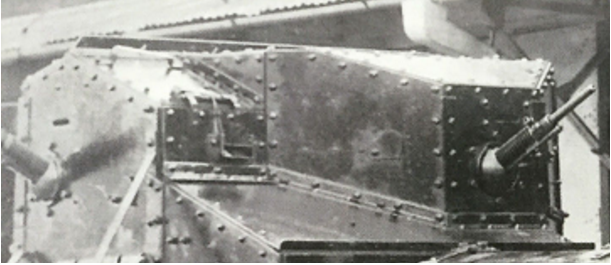
Close up of a very clean Whippet in Japanese service showing the modification to the driver’s plate and the Japanese machine guns fitted. Photo: Shimoharaguchi
These Whippets remained in Japanese service until 1922 when they were scrapped presumably worn out despite having been provided almost new from the UK in 1919. There was no license to produce them in Japan anyway and they were large, under armed and rather clumsy.
A final operation
With the First World War effectively over the British deployed some 16 Whippet tanks to Ireland in 1919 due to ongoing troubles with rebel Irish activity. The 16 Whippets sent were part of B Company 17th Armoured Car Battalion of the Tank Corps and were stationed at Marlborough Barracks in Dublin. In celebration of the end of World War One, a parade was held in Dublin in July 1919
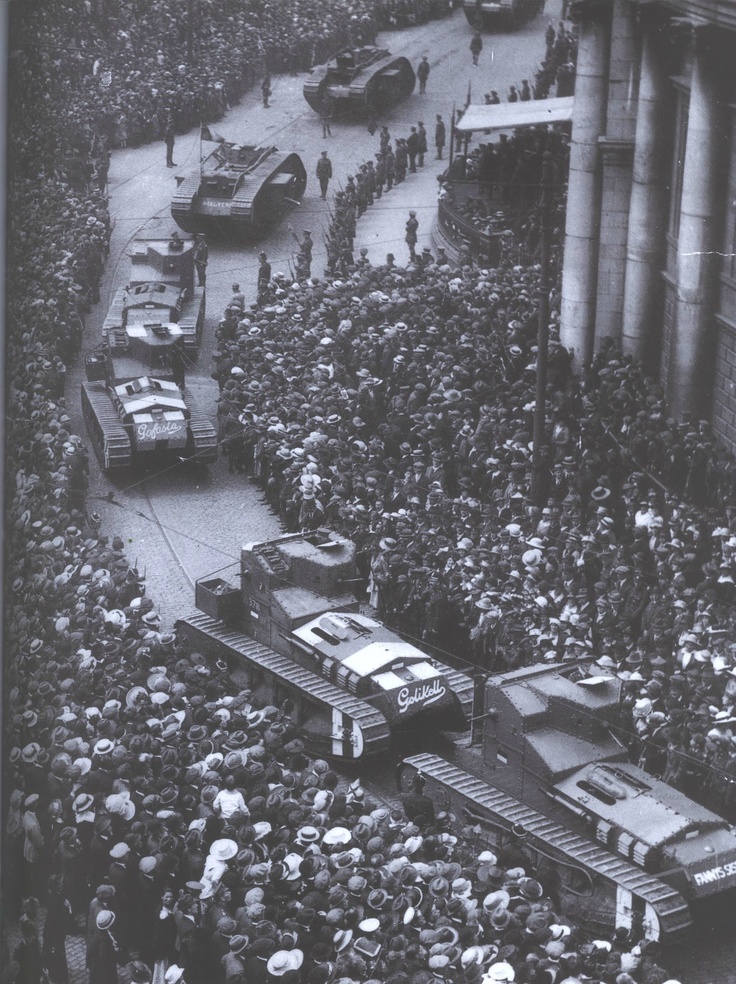
Dublin victory parade July 1919. Four Whippets took part; A230 GOFASTA [Go Faster] previously known as ‘Cynic II’, A378 GOLIKELL (Go Like Hell), A351 Fanny Adams, and A289 Fanny’s Sister. Noteworthy is the fact that two of the vehicles still retain the full engine deck paint White-Red-White markings for aerial observation purposes. The official guide was that a 1 foot White, 2 foot Red, 1 foot White band of color was able to be seen at 1800 feet and was to be painted on the roof of the cab. Here painted on the engine cover is clearly larger than that officially recommended.
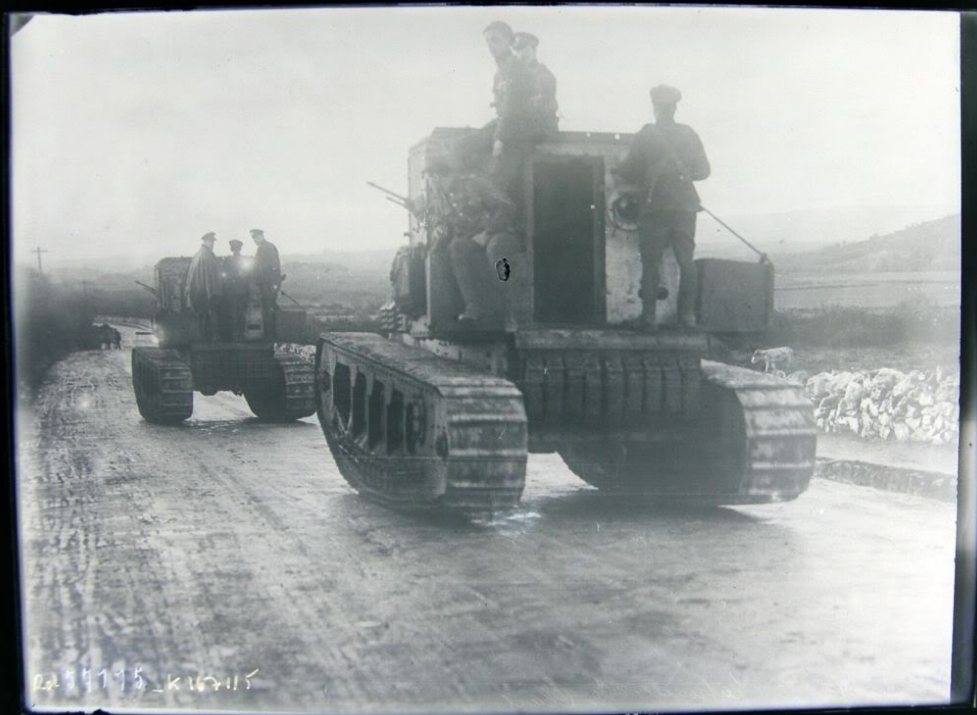
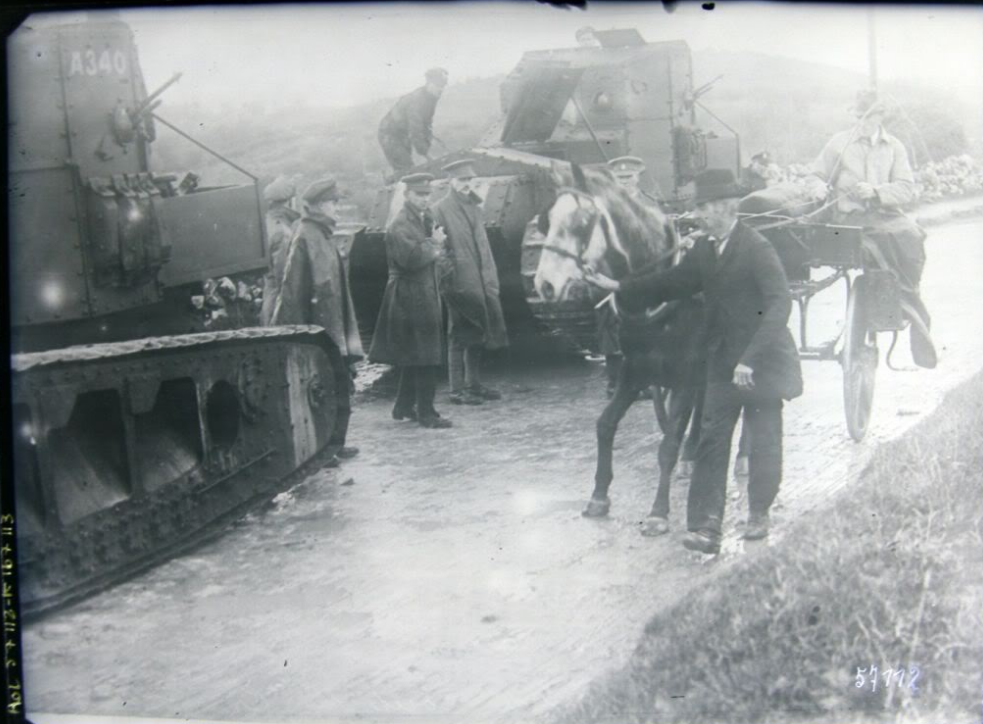
B Company on patrol against rebel Irish activity in County Clare November 1919. These photos are sometimes noted as being 1920 but the one on the left appears in the November 26 1919 edition of the Belfast Telegraph. Photo: BNF
By May 1922 it seems all of the Whippets deployed to Ireland were withdrawn as Ireland descended into civil war.
A failed sale
The British still had some surplus Whippets available in July 1924 and had negotiated a somewhat exorbitant price of £5000 per vehicle for 3 tanks to the government of Romania. The vehicles were to be officially sold as ‘scrap’ from left over war stock but the Romanians estimated with just 2-3 months work they could be in service. The deal though never took place as the British government inexplicably never approved the sale.
The name ‘Whippet’
It is perhaps a testament to the success of the Medium Mark A that it is almost completely referred to as ‘The Whippet tank’ rather than by its official name. The first use of the name ‘Whippet’ is on the front of the Tritton Chaser itself and such a success the vehicle was that during the war even the later Renault were sometimes called a ‘Whippet’ tank too.

Contemporary postcard passed by the War Censor (Author’s collection)
In a British parliamentary debate in July 1927, Viscount Sandon asked the Secretary of State for War if he would “consider restoring the designation whippets, as used officially during the War for small tanks, in place of tankettes, unless the former term is still used to represent a particular type?” The reply from Commodore King was that “The nomenclature of the various types of tanks is under consideration.” The name Whippet though generally drops out of use by WW2 although can still be found on occasion referring to light vehicles including the occasional armored car. There was even an official British suggestion in 1940 to regroup light tanks into a ‘Dog’ class of vehicles by which time all the Whippet vehicles were officially marked as ‘obsolescent’.
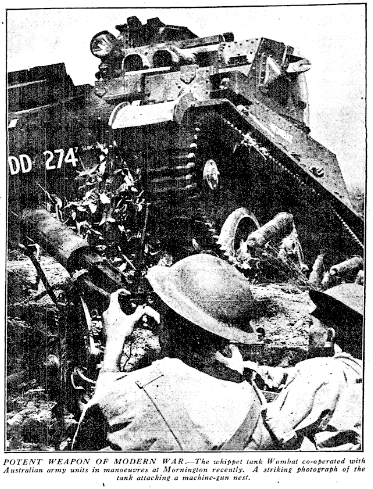
British Mk.VIb on exercise recorded in the press as a ‘Whippet’. Photo: The Press, 1938
Surviving Whippets
Despite 200 being built, today there are just five surviving Whippet tanks in Belgium, the USA, Canada, South Africa and the United Kingdom.
A284 was previously at Aberdeen Proving Grounds and may currently be in storage
A387 known as HMLS Union (His Majesty’s Land Ship) is at the Army College in Pretoria, South Africa
A259 formerly of C Battalion, known as ‘Caeser II’ is presently at Bovington Tank Museum, Dorset, UK
A231 known in service as ‘Carnaby’ formerly of A Company, 3rd Battalion, is held at CFB, Borden, Canada (incorrectly showing serial number A371 which was known as ‘Sphynx’ and was captured in Russia in 1919 and still in Russian service in 1924)
A347 known as ‘FIREFLY’ is held at the Royal Museum of the Army, Brussels, Belgium
Specs |
Whippet |
Col. Johnson’s Whippet |
| Crew | 3 – Driver, Commander, Machine Gunner (although a second machine gunner may have been in place on occasion) | 3 – Driver, Commander, Machine Gunner (although a second machine gunner may have been in place on occasion) |
| Propulsion | 2×7.72 litre 45hp Tylor JB4 petrol engines, 33 kW each@1200/1250rpm | V12 Rolls Royce Eagle water cooled petrol engine, over 300hp |
| Fuel | 70 gallons (318.2 litres) | Unknown |
| Range | 80 miles (130 km) | Unknown |
| Weight | 14 tons (14,225kg) | 14 tons (14,225kg) |
| Speed | 8.3mph (14km/h) | 30 mph (58 kph) |
| Ground pressure | 15.8 lbs per square inch (1.11 kg/cm2) | Unknown |
| Trench crossing | Official 8.5 feet (2.59m), Tests 10 feet (3.05m) | Unknown |
| Suspension | 6 Skefco roller bearings each side | Transversely mounted leaf springs |
| Armament | 4x.303 calibre Hotchkiss Machine guns, (1 forward, 1 left, 1 right and 1 to the rear) with 5400 rounds | 4x.303 calibre Hotchkiss Machine guns, (1 forward, 1 left, 1 right and 1 to the rear) with 5400 rounds |
| Armor | 6 – 14mm | 6 – 14mm |
| Dimensions | 20’x 8’7” x 9’ (6.1×2.61×2.74m) |
Links
Landships Forum
RFC Minute 2272.G from General Staff to GOC RFC 14th March 1918
Tank Medium Mark A “Whippet” by P. Kempf and T. Rigsby
Tank Medium Mark A “Whippet” Survivors by P. Radley
Textbook of aero engines, by E.H. Sherbondy, 1920
Medium A (Whippet) Tank in South Africa 1919-2009, by Richard Henry. Military History Journal Vol.14 No.5 June 2009
AFV News Vol.39-3 – British Tank names by Peter Brown
Cabinet Officer Papers 120/354 August 1940 to September 1942: Tank Nomenclature and Classification
National Library of France
Logbook of a Pioneer, Sir Albert Stern
Imperial War Museum collection
National Army Museum collection
The British Tanks 1915-1919 – David Fletcher
Tank-hunter.com
Landships of Lincoln, Richard Pullen
Medium Mark A Whippet, David Fletcher, 2014
Mk.A Tank Whippet of Japanese Army, Osamu Shimoharaguchi, 2015
Patent GB126,671 filed 2/2/17 by William Ashbee Tritton
Tanks of the World 1915-1945, Peter Chamberlain and Christopher Ellis
Rand Rebellion 1922
A brief history of the Hippisley Family, by Mike Matthews, 2014
Belfast Telegraph November 26th 1919
About the Hippisley family
‘The surplus Whippets’. Telegram from Colonel Antonescu, Romanian Army, 3rd July 1924
Innovating in Combat by Dr Elizabeth Bruton
The London Gazette, 21st December 1915
The London Gazette, 29th October 1918
‘Potent Weapon of Modern War’, The Press, Vol. LXXIV, Issue 22334, 23rd February 1938
Tank Nomenclature, Hansard HC Deb. 25th July 1927 Vol.209 c850850
Innovating in Combat blog
Beute-Tanks: British Tanks in German Service Vol.2, 2011 Tankograd No.1004 by Rainer Strasheim
And a thank you to Seon Eun Ae for translating some of the Japanese parts
Craig Moore, one of our writers and editors includes the Whippet tank in this video he made for The Tank Museum, Bovington, UKCentennial WW1 POSTER


Provisional Handbook of the Chaser Mark I: Whippet Tank Service Manual
By Andrew Hills
In 1916, the British Army had started using tanks in battle in an attempt to break the deadlock of trench warfare. These large lumbering Heavy Tanks were slow and unable to exploit weaknesses in enemy lines or a breakthrough. What was needed was a new ‘Medium’ Tank, and the Lincolnshire firm of William Foster and Co., the brains behind the Heavy Tanks set to work on a new Medium vehicle. By February 1917, this new vehicle, known as the Tritton Chaser or ‘Whippet’ was ready in prototype form. Two hundred of these Whippet tanks, officially known as the Medium Mark A were produced. This manual dates to the early days of the Whippet as it was being produced for the Tank Corps. A guide to the operation and maintenance of this new, smaller, and faster tank.
Buy this book on Amazon!
By Craig Moore
The First World War’s fierce battles saw the need to develop military technology beyond anything previously imagined: as exposed infantry and cavalry were mowed down by relentless machine-gun attacks, so tanks were developed. Stunningly illustrated in full colour throughout, Tank Hunter: World War One provides historical background, facts and figures for each First World War tank as well as the locations of any surviving examples, giving you the opportunity to become a Tank Hunter yourself.
Buy this book on Amazon!
By David Lister
A compilation of little known military history from the 20th century. Including tales of dashing heroes, astounding feats of valour, sheer outrageous luck and the experiences of the average soldier.

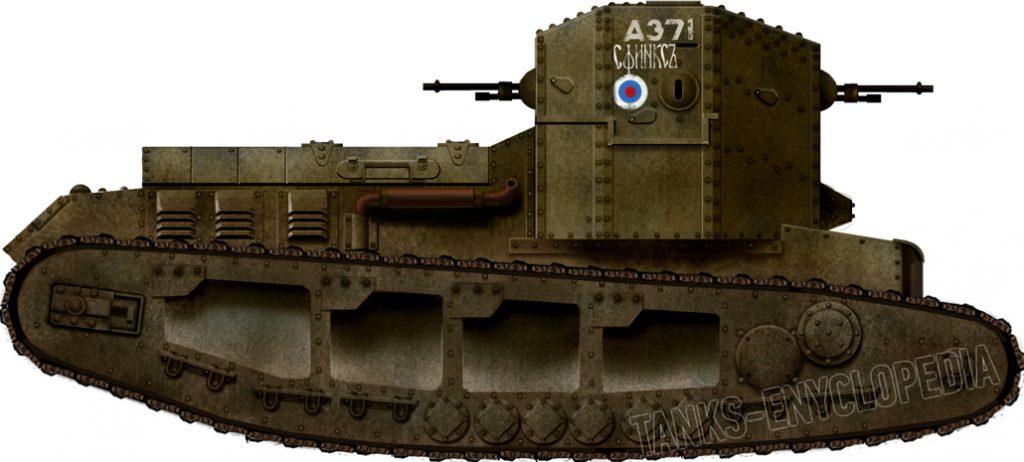

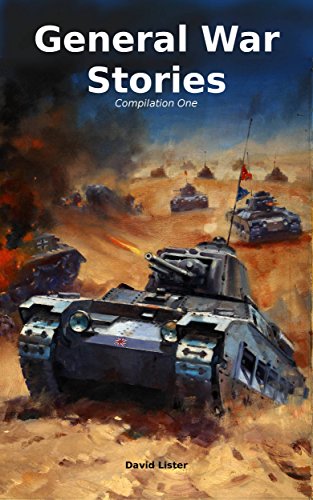
8 replies on “Medium Mark A “Whippet””
Those “Whippets” on the postcard look suspiciously like Renault FTs.
Haha yes, it just goes to show that there were some instances where the Renault FT was called “whippet.”
– TE Moderator
I think CBE is commander of the order of the British Empire?
Hello, i like this article very much. But here’s a question ,in the picture “Captured “Red” Russian Gun Whippet rearmed with a 37mm gun, winter 1920”,it didn’t tell which 37 mm gun was equipped, and that’s what i want to know.
37 mm Puteaux gun from a Renault FT it seems.
ok,thank you
Great article but could I suggest some corrections to decorations mentioned.” OBE (Order of the British Empire) in 1918 and in 1937 the CBE (Citizen of the British Empire).” should be OBE, Officer of the Order of the British Empire and CBE, Companion of the Order of the British Empire
The two MGs like what are they going to do if an A7V just pops out of nowhere